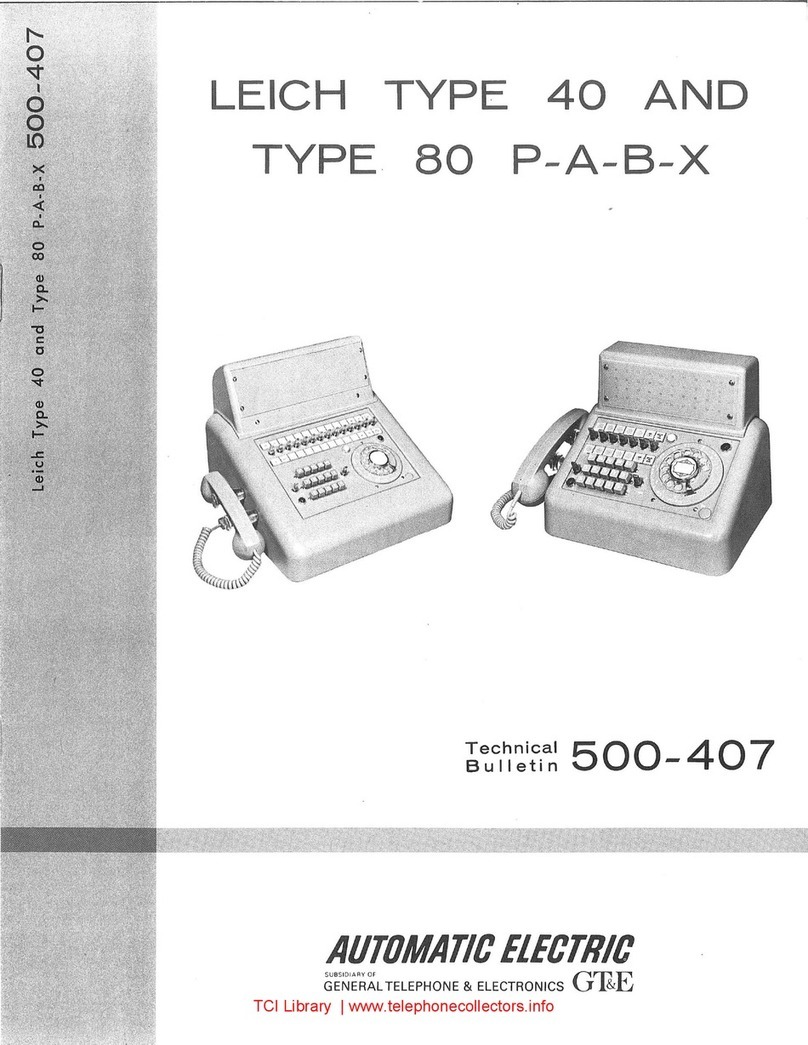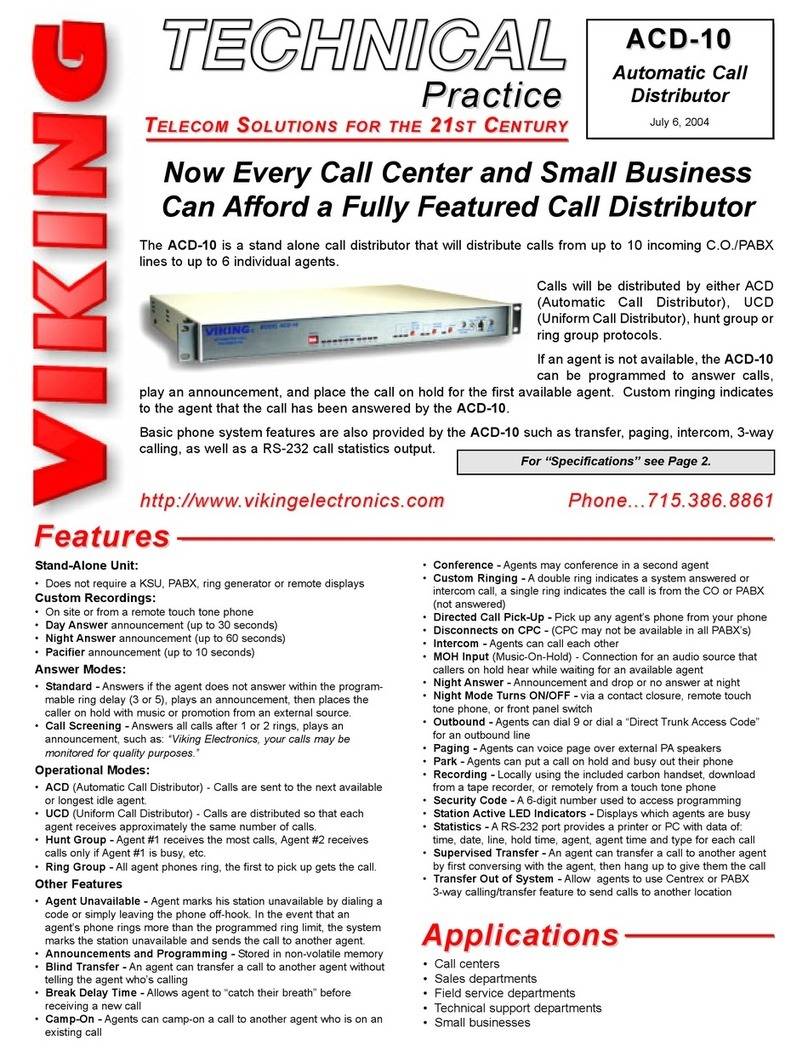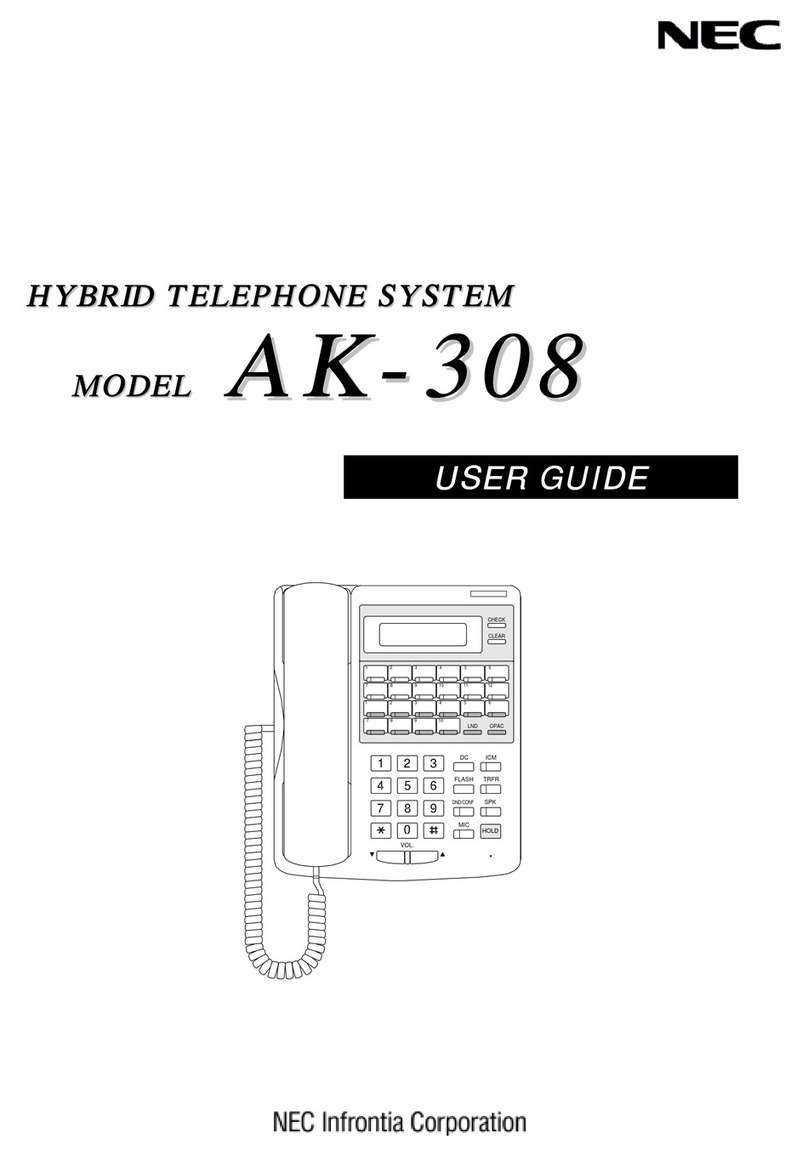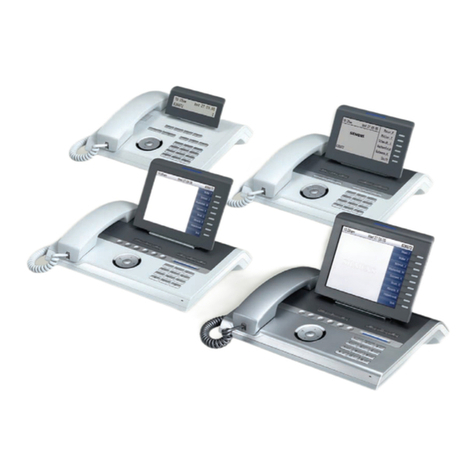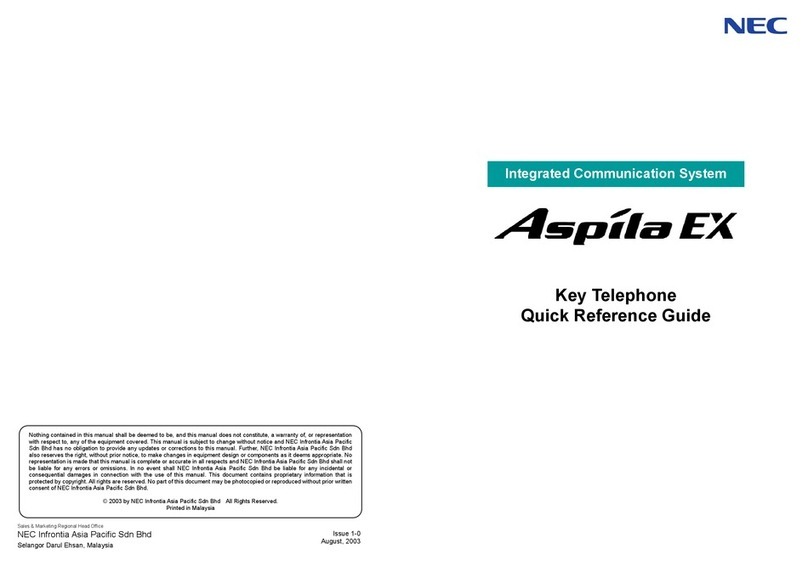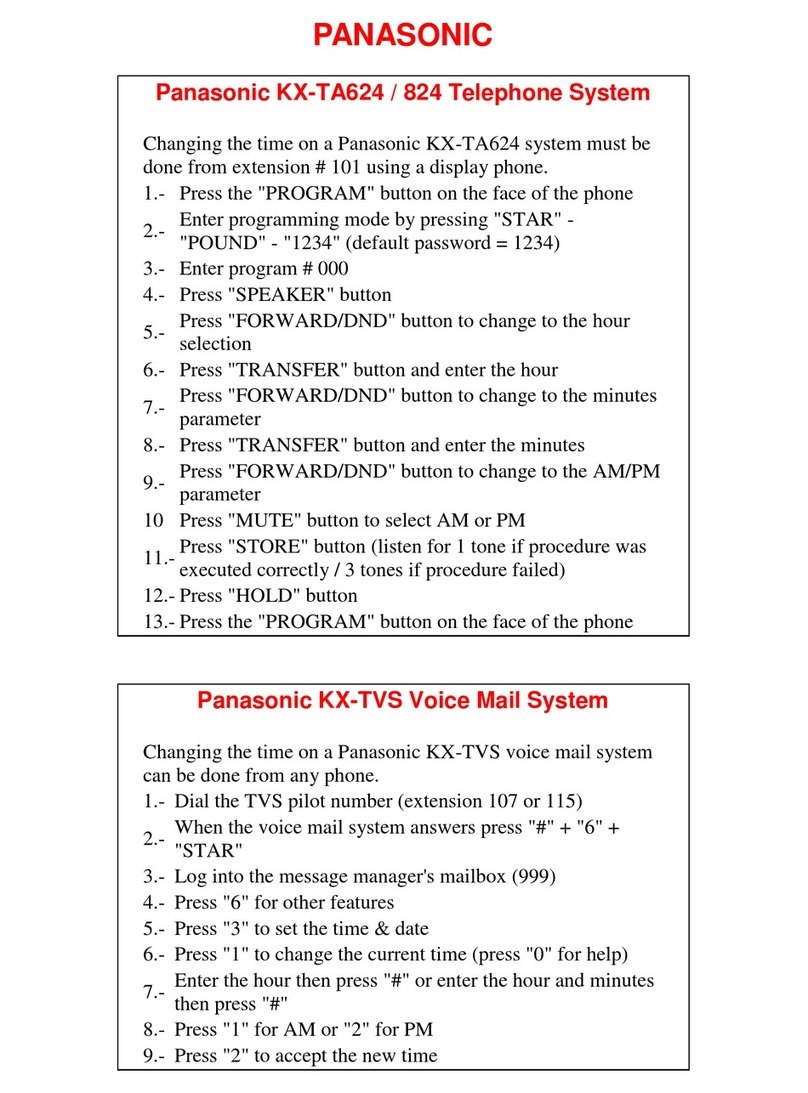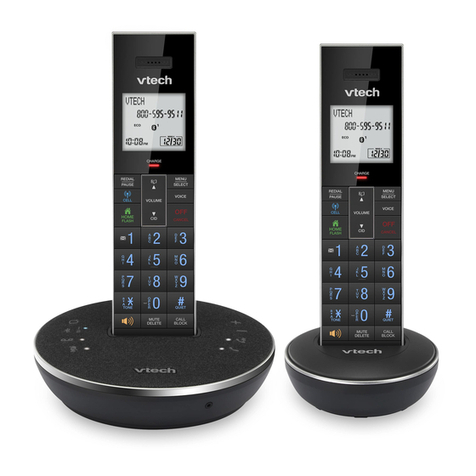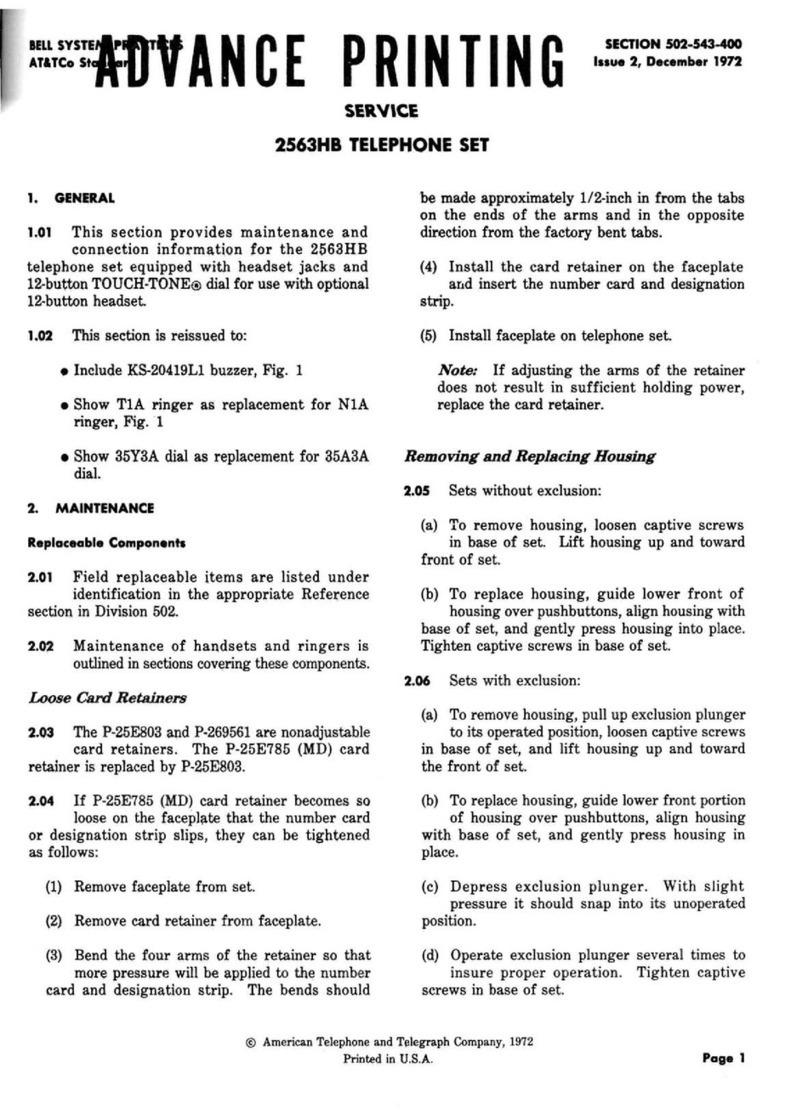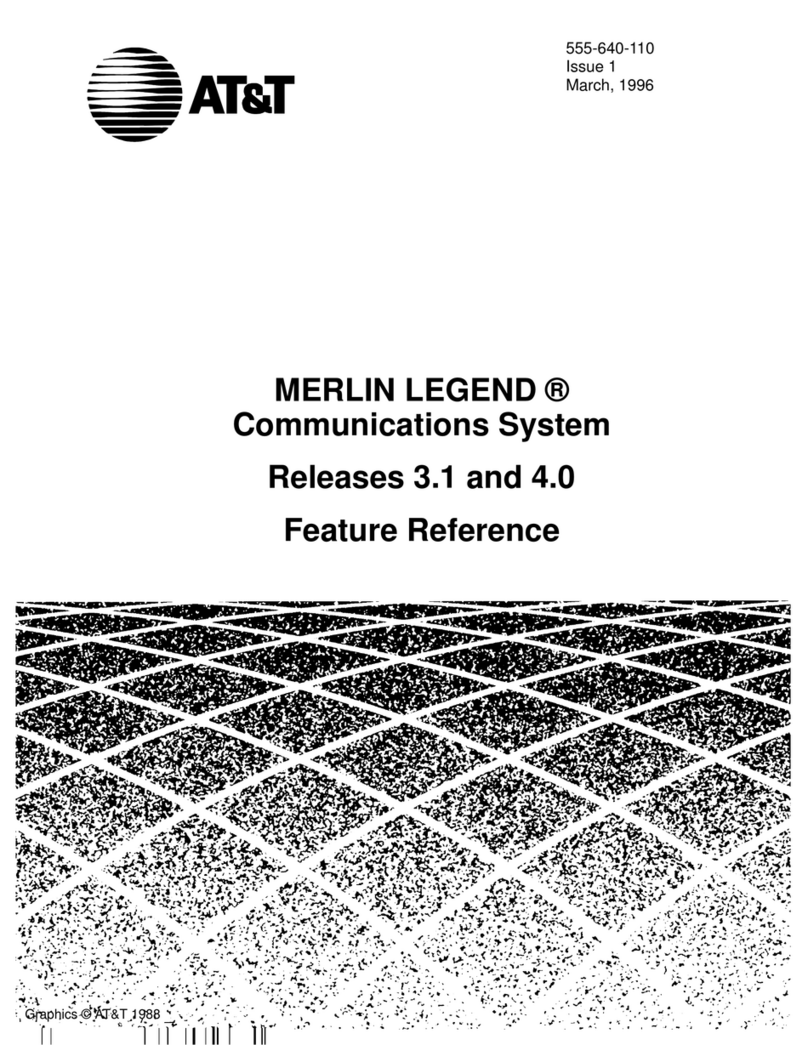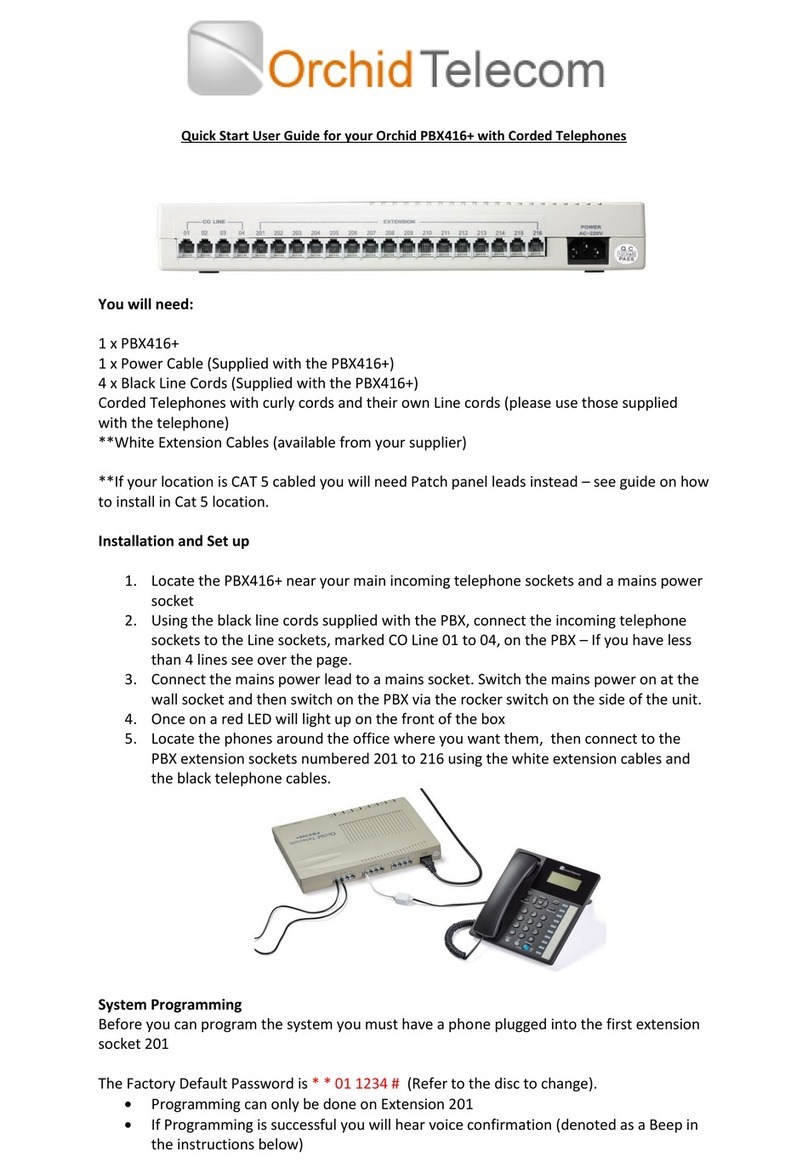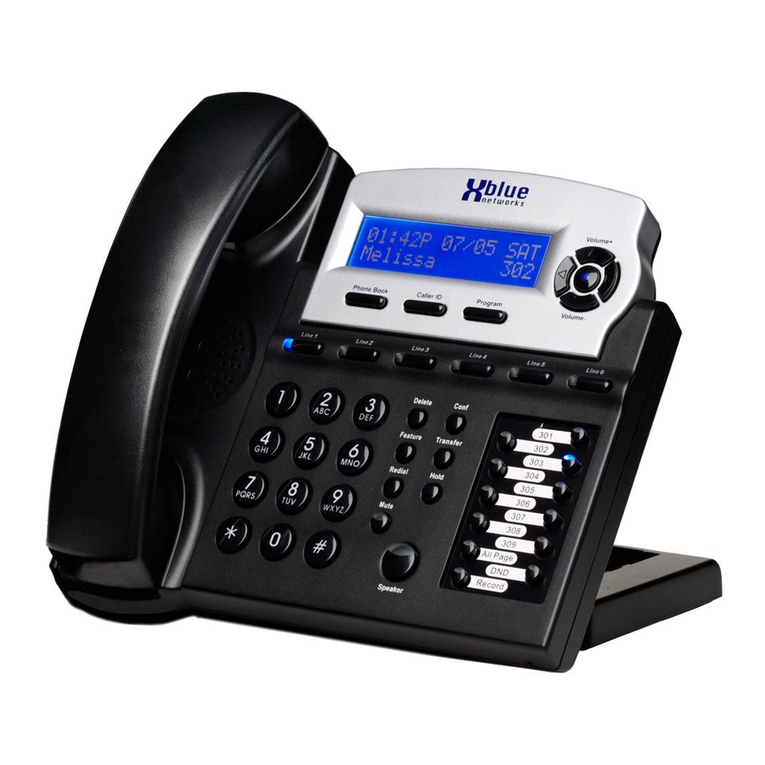General Telephone & Electronics Automatic Electric P-A-X User manual

\1
I I
r r
.,
-·
I,
'
.I
I '
I'·
/
/'
.\
·I
j
I,
,\'
'I
)',
,,
I
I)~-
,~
'I
\
t
b '
'I
I
'~
J
//'
'1
\,
11 f
,/
I
~
1\
"'
\ -
I
'\
I
ri-;
..
) '\· \
\~
1,
(
IJ '
~
1
/
'
1,
) ;
.{
.
,-
I _,
v'
I
11
/
I
•'
\
,.
'11,
'I
\'
1,
I I
-~
;,
;
I
,,
-1'
I
> /
r · 1
\.
I
! ;
'-.
j -
" {
,l
J
,.,
t·'
I '
r
I
I
\-'
v.\
1 •
I
'/'
x l
I .
I '
y I
" I
I'
l'
.,
/
1/
_)
I
,.
I
I
1,
J
I
•1
1l
fl
v
,l
\ '
\
,.
\ '
-:,
,.
I I
I/,;
I I
1\
\
,/
I'
/,'
.
'1
I
,,
c~
I
1
i
'·
t·
t'
'i
I\\
I l
1,
.1
' ' . ( I
,I t
~.
r
1,
\(
'
['
"
.'9.
I·,
I j'
Ii
'!
,"
''
\·
I
r \
, I
(
TCI Library www.telephonecollectors.info

J
,J
(•.
:<;,
>
t
; I
'
"'
'
';
j
'(
<
l\.
I.
r
'
rr.
'"(~''
. /
r '
I
\
t'
;,
'-.
('
I
'
"'
. ,
'
'I
-P:.J
r l > ,...,
' I
( ' '
*
/
~
'
/
,\
\
,,..,.
.
:;/
-··
'-1
/ ;./
l
1'
•
!\,/K
(
"v.~._,
./!
~'"
\'
'
. I
"
' '
j
}
,.
'
I~
• "' ~J
'-
\ '' \ f
1 \t\
~
,-r
!.,
,,
t
\'
('
(
I
.(
,..
'
~\
J , Factory,)
deqelopme~
laborptories, and gen-erpl
<!ffice
ar;;:..Norihlake,
~·
f ' \ · , 1 I ,!'_
.l
"·
\ ,,
~
J
'·
t
.•
'"
~
/ ,
_,
AUTqMATIC
ELEC'fRIC
C,
OMPANY
i&
an
J
6r
'
g~1uzation
?f
qesigning,
engineering,
and
1
manu(actur.ing
's
pecialists
in
t
the
field&
of
com
t
muni~ation,
~lectrical
control,
and
allied
arts.
Fp~
mor~
tf1an
sixty
years
tlie
company
,
has
·
bee~
known
~hrouj;hout
~he
wor
,
ld
4s
t.)1~
originator
a.
n<l
parer\.t
··
mai1ufactuter
of
tli.,e.-
Sti;ow~er
Autli>mati.c
Telephon~
System.
Today
Strowgei;-type
equipm~n~
serves
over
7So/o
of'
the
-
world's
,
autom;i.ti~
telephones.
T.Qe
same
experience
and
technique
that
'
have
grown
1out:
of
the
~
work
of
Autonl,atic
Electrfc
'engi-
neers
i[t th,e'
fi~lcl
of
tef~phone
e~nU'nuni~ation
are
a's~
·
b~iµg
suc~s~fully
applied
,
pn
~l'l
·
ever-increasing
s~ale-
to
the
so'lutioft
of
el~ctri<;al
co~trQl
;
pn,ib]ems-
in
husiness
<
an~
industr~.
I
/'
,\
/ '
;;:
• I
••
1,,
, I
fo
,/
' -
,,.
\.
~
/
PR~IPAL
~
PRODU(:TS
' . ( '
-·
-·(
,,,
,/
,,
f
\
j·
Strowger
Automattc
Tek!phon,e
Systef1u
-<;:
om·
15-,
~on~
'
ecti<tns,
11nd
with
faeilities
for
speci~l
services
to
meet
ffie
needs
-0£
tbe
user.
1
control
(
'plt:te
allto~natic
cen~rariffi•~e
equipment
'
for
ex· ,
change
uea.1
of
any<
size, froni
small
towns
to
th«;
largest)11etropolitan
ntlWo~ks.
,_
/
I . , '
r .
'·
.
P.B:X.
_
Switdiboards-A
complrte
range
of
cord-
less
and
<·o):d
types
for
the
inodern
1:i.1sjness. \
Commwiity
,
Arttdmatic
Exchangu-Una~tel'jded
automatic
un
.its .for
s1~iaJI
rural.,or
suburban
ueas,
1
.'
wi
'
th
fa.c1Jities
for
SWit<)iingintO
attended
' I
'
..
' I > I
Tel~phone
_ln~trumflnls
-
,Modern
desig,ns
fo1:.
autornatjc
or
manual
exchanges.,
inclt1ding
the
' I ;.,.
MonophoQ-O-the
world's
most
attractive
.and
em·
excJ:ianges. · ,.- ' ' ' '·
, \ I
dent
handset
1
t~lephone:
'
J'
I
.,;
,
Alutomafi~
~oil
Bo11rds
t':A
n.
adaptatirn
~f
.
Strowger:-'prmclJ.ll~s
,
to
toll
sw1tchmg,
resulting
m
simplififation
of
opera!ors'
eqµjpme~t
and
greater
..,.
1 '
,,
,
Exchange
1Accessor:y
Equip~nent
-A
µJtiliary
,e
x-
change
'.{li1d
&uhsiat(op
equil?,meJ"(•
itH'l~dihi;
\
' \
\.
~
'l
~
>
,,,
; ' l
'I '
1 '
,
j>-
1 .
,..
t'
. I
..
...
/
/ l I
economy
'
qf
opt:rating
a'riJ,
toll-1·ircµi( titn"e. _
-::C_
/
manual
de.sk.s,-test<inig .
app
'
aratus,
tra;isn1iss,ion
·,_
equipnient,
and
all
a.cces~o.iies
ne
.
ed~13or
the
Private
Aut
•oma-ti'<
Ex1;han-ge.s
.1:
Available
in
operation
'
and
111aipte11anee
Qf
the
.
1uodern
teJe.-
v~rious
rapacities,
)V'ith
.
Qr
"'id;'out
central-offi~e
phqn
_e
exchange.
·
..?
. ., ' I
--
/
''
~
l-
1
-
)'
' I
y.
J->i
//'"'
.....,
r-
• . '(
~
Makers
.also
pf,ele<-tri(1al
co..;tro
apparatus
for
industri~,
.
~ineering,
ai•d
'
prblic
-"'
u~i'y
companie5,
telephone
app8,ratus
for
railroads
and
nipe
-
line
rQmpanle.i;,
{1rlvate
telephone
_s:Vstems
of
Ml
~ypes,
'
electric;11,l
anf\
~mmunication
tf~vices
(or
•
~ircra£,t
and
air~a:v(
control,
;
an
,
~
~pecial
coDl(lnunicafion
!!P~aratqs
for
milif~y
I '
~nd
naval
depar'tpient~.
.t
.,...
'
' I f
/
.r
_.,.>
> ,, \
""
\,...
,.,__
\
\
L '.1>-: '
,
,..
'
'\
•
11
./
·'
I I ' 0 ' k ' \
\ '
I...
I
(
''
''
/\
t-
...
\ . ' , J
..j
I ' - I ' - I
. I
'
·,.
')
( '
" I
' "
'\
' \
L
~
I
/
./
Copyright
©
1
19
\
6~
1
Automatic
·
Electric
.
pompany
,I
-
j,..
.....
,I
r
~
I J ( "
.,
I'
/'
.•.
: l / /
,.
/.'
)
I·
'
<
,/
;
_.,-
I
' r \
/
I I
~,...
'
...
'
\
.\
I
~
I
}.J·~
'
·,,
'I
i'
\ \
}
, '
j
J I
•
__y
.\
,..;.-'
}
~
J •
1,
' .
I
'l-
'
I
.,
(i
f
\
./
/I
•'
·~
~\
(
TCI Library www.telephonecollectors.info

TABLE
OF
CONTENTS
Section
1.
INTRODUCTION.
1. 1
Scope
of
Publication
.
1. 2
P-A-X
Equipment
1. 3
Station
Equipment
1. 4
The
P-A-X
1. 5
Building
Wiring
.
2.
TOOLS
AND
TEST
MATERIAL
2.
1
Tools
.
2.
2
Maintenance
Materials
2.
3
Hand
Test
Telephone
3.
LUBRICATION
.
4.
PREVENTIVE
MAINTENANCE
4.
1
Maintenance
Procedures
4.
2
Performing
Preventive
Maintenance
5.
STATION
SUBSCRIBER
COMPLAINTS
5. 1
5.
2
5. 3
-5. 4
5. 5
5.6
Classes
of
Complaints
Class
1
Complaints
Class
2
Complaints
.
Class
3
Complaints
.
Class
4
Complaints
.
Investigation
of
Complaints
and
Correction
6.
TROUBLE
SHOOTING
6.
1
General
6.
2
General
Notes
6.
3
Using
the
Test
Lamp
6.
4
Using
the
Ground
Cord
6.
5
Testing
Tone
and
Ringing
Circuits
7.
REMOVAL
OF
COMPONENTS
AND
PARTS
7.
1
Removal
of
Line
switch
. .
7.
2
Removal
of
Strowger
Switches
.
7.
3
Relay
Removal
7.
4
Type
45
Rotary
Switch
Removal
7.
5
Lamp
Removal
7.
6
Fuse
Removal
. . . . . .
7.
7
Alarm-indicating
Power
Fuse
Repair.
8.
PERIODIC
INSPECTION
AND
READJUSTMENT
OF
RELAYS
AND
SWITCHES
.
9.
ROUTINE
TESTS
Page
1
1
1
1
2
4
5
5
5
5
6
6
6
6
8
8
10
10
10
11
11
17
17
17
18
21
21
•
21
.
21
.
21
22
23
25
.
25
25
27
•
30
TCI Library www.telephonecollectors.info

COMMON
LINE
AND
DISTRIBUTION
FINDER
SWITCHES
(FRS)
RELAYS
(CLAD)
-~~L..;.;~
RINGING
INTERRUPTER
---~~~Iii
RINGING
CONVERTER
TONE
EQUIPMENT
TONE
TRANSFORMER
RINGING
TRANSFORMER
VOLTMETER
CONNECTOR SWITCHES
(CRS)
Fi
g
ur
e 1.
Typical
rotar
y
-typ
e
P-A-X
.
FINDER
CO
NNECTOR
LINKS
(FC
LINK
)
TEST
BINDING
POSTS
AMMETER
24
VOLT
BATTERY
CHARGER
TCI Library www.telephonecollectors.info

GENERAL
MAINTENANCE
OF
P-A-X's
1.
INTRODUCTION
All
Privatf'
Automatic
Exchanges
(P-A-X)
manufactured
by
Automatic
Electric
Company
:1.r0
ruggt·'dly
constructed
(figure
1),
designed
for
long
use,
and
require
very
little
attention.
;\
:-,u
..
i!:
amount
of
maintenance
is
required
at
n·guL.u·
inter
vais
lo
forestall
possible
service
int
nTuptions.
Minor
defects
can
be
detected
•
.L1d
cc;rrcC'ted
before
they
develop
into
a
serv-
ice
e:ompla
int.
Thih
puf>lica
ti.on
is
directed
pl'imarily
toward
personnel
who
maintain
the
rotary
;:;witch
and
relay
switching
components
of
the
i'"A-'<.
i .1
S·.·ope
of
F'ublication
This
publication
includes
maintenance
instruc-
tions
for
all
components
of
all
P-A-X's.
Instructions
for
cleaning,
adjusting,
removing,
and
repairing
relays
and
rotary
switches
are
applicable
to
a
majority
of
the
components
and
therefore
are
given
only
once.
For
detailed
theory
of
operation
of
your
P-A-X,
refer
to
the
technical
bulletin
supplied
with
the
equipment.
1 .2
P-A-
X
Equipment
An
isolated
dial
telephone
system
consists
of
three
distinct
components
as
shown
on
figure
2.
a.
The
first
component
is
the
station
equip-
·ment
which
is
designated
as
the
"A"
equipment.
"A"
EQUIPMENT
"c"
EQUIPMENT
+
b.
The
second
component
is
the
P-A-X
equip-
ment
which
is
designated
as
the
"B"
equipment.
c.
The
third
component
is
the
building
wiring
which
is
designated
as
the
"C"
equipment.
1.3
Station
Equipment
rr11e
telephone,
designated
as
the
''A"
eq11ip-
ment
in
figure
2,
is
represented
in
figure
3.
With
the
handset
on
its
cradle,
the
hooks
witch
places
the
ringer
and
its
associated
capacitor
in
series
across
the
line,
or
from
one
sidf~
of
the
line
to
ground
when
party
line
service
is
required.
The
capacitor
blocks
the
flow
of
the
d-c
switchboard
battery
in
the
ringer
coils
to
prevent
a
shorted
or
''permanent''
line.
However,
the
P-A-Xringingconverter
supplies
a
20-cycle
signaling
source
which
flows
through
the
capacitor
to
operate
the
station
ringer
and
signal
the
called
party.
This
ringing
current
is
supplied
over
the
(+)side
of
the
line,
through
the
ringer
coils
and
capacitor,
to
either
ground
at
the
instrument
or
back
over
the
(-)
side
of
the
line
to
the
P-A-X
(-)
battery
and
ground
through
the·
ringing
relay.
Removal
of
the
handset
causes
the
hookswitch
to
open
the
ringer
circuit,
and
the
ringing
cut-off
relay
of
the
P-A-X
conversation
link
operates
to
stop
the
ringing.
To
make
a
call,
remove
the
handset.
This
places
the
dial
pulse
springs
in
series
with
the
•a•
EQUIPMENT
ISOLATED
DIAL
TELEPHONE
SYSTEM
Figure 2. Isolated dial telephone
system.
1
TCI Library www.telephonecollectors.info

HANDSET
TRANS
UNIT DESK STAND
•
TRANSMITTER
.
x·r----0---
...
IMPULSE
SPRINGS
ITERM.
BLK.
LI
HDOKSWITCH
RINGER
USE
"z"
WIRING
FOR BRIDGED
RINGING
•z•
'i
4 G
\
Fi/,7tre 3.
Typical
wiring
diagram
of
a tcleplw11e set.
transmitter
across
the
line
to
the
P-A-X,
completing
a
d-c
loop.
The
switchboard
equip-
ment
is
seized,
dial
tone
is
heard,
and
the
desired
number
can
be
dialed.
While
in
its
off-normal
position,
the
dial
shunting
springs
will
short-circuit
the
transmitter
to
prevent
dial
clicks
in
the
receiver
and
also
to
prevent
the
variable
resistance
of
the
transmitter
from
affecting
the
dial
pulses.
The
dial
pulse
springs
interrupt
the
circuit
to
the
P-A-X
a
number
of
times
equal
to
the
digit
dialed
to
select
the
desired
party.
The
equipment
is
released
when
the
handset
is
restored.
This
is
the
general
operation
of
the
telephone.
A
detailed
wiring
diagram
is
located
inside
the
assembly
and,
with
it,
each
wire
can
be
traced
and
identified.
No
special
tools
are
required
for
repair
except
a
screw-
driver
and
a
pair
of
dial
pliers.
1.4
The
P-A-X
The
P-A-X
designated
the
"B"
equipment
in
figure
2,
consists
of
the
following
three
inter-
related
components
to
form
a
switchboard
(see
figure
4).
1.4.1
The
individual
line
equipment.
This
group
of
identical
units,
required
for
each
telephone
line,
consists
of
line
relays.
The
two
wires
from
each
telephone
terminate
in
the
switchboard
at
a
line
relay.
When
a
subscriber
2
closes
the
circuit
to
the
line
relay
by
lifting
his
handset,
the
relay
operates
and
starts
the
linefinder
hunting
for
an
idle
connector.
In
some
P-A-X's,
a
lineswitch
is
used
in
place
of
a
line
relay
and
line
finder.
In
this
instance,
the
subscriber
lifts
his
handset
and
closes
the
circuit
to
a
lineswitch.
The
lineswitchoperates
automatically
and
connects
the
calling
line
to
an
idle
connector
trunk.
A
lineswitch
is
required
for
each
station.
The
functions
of
a
lineswitch
are:
a.
To
extend
the
line
through
to
an
idle
con-
nector
trunk.
b.
To
busy
the
line
at
the
connector
bank
terminals
to
incoming
calls
immediately
upon
operation
of
the
line
switch
relay.
c.
To
restore
itself
to
normal
when
the
connector
is
released.
The
type
27
plunger
lineswitch
used
in
some
P-A-X's
consists
of
a
line
relay
and
an
oper-
a
ting
coil
which
activates
an
armature
carrying
a
plunger.
Details
of
the
type
27
lineswitch
are
fully
described
in
bulletin
805,
copies
of
which
will
be
furnished
upon
request
from
Automatic
Electric
Sales
Corporation.
1.4.2
Conversation
links.
The
conversation
links
consist
of
linefinders
and
connectors.
The
number
of
each
depends
TCI Library www.telephonecollectors.info

on
the
size
of
the
P-A-X.
The
linefinder
and
its
associated
connector
form
a
linefinder-
connector
link
(conversation
path).
a.
The
linefinder.
Some
P-A-X'susearotary
type
linefinder
while
others
use
a
Strowger
type.
When
a
linefinder
is
seized,
it
hunts
for
and
connects
an
idle
connector
to
the
calling
party
line.
At
this
point,
circuit
operation
causes
the
distributor
switch
to
advance
its
wipers
ahead
to
the
next
idle
link.
The
mechanical
components
of
a
Strowger
linefinder
include
a
shaft,
and
a
ratchet
mechanism
for
raising
and
rota
ting
the
shaft.
Its
electrical
components
include
control
relays,
vertical
and
rotary
stepping
magnets,
and
a
magnet
which
releases
the
ratchet
mechanism.
b.
The
connector.
Under
guidance
of
the
calling
party.
the
connector
functions
as
an
operator
via
the
telephone
dial.
Connectors
used
in
P-A-
X's
are
the
Strowger
type
and
in
some
cases
the
rotary
switch
type.
The
COMMON
EQUIPMENT
DISTRIBUTOR
SWITCH
Strowger
type
connector's
mechanic
a 1
components
include
a
shaft,
a
ratchet
mechanism
for
raising
and
rotating
the
shaft,
and
two
sets
of
wipers
(termed
the
line
and
control
wipers).
Its
electrical
components
include
several
control
relays,
vertical
and
rotary
stepping
magnets.
and
a
magnet
which
releases
the
ratchet
mecha-
nism.
The
bank
contacts
at
the
bottom
of
the
connector
are
the
terminals
of
the
t e 1e
phone
lines
which
the
connector
serves.
Each
contact
is
multipled
to
each
connector
bank
so
that
all
connectors
can
have
access
to
any
of
the
telephone
lines.
In
response
to
dial
pulses,
the
connector
raises
its
wipers
to
the
dialed
level
and
across
to
the
dialed
level
contact
which
is
the
called
party's
line.
When
the
connector
is
released,
the
switch
shaft
is
restored
to
its
normal
position.
The
connector
func-
tions
are:
(1)
Upon
seizure.
to
hold
equipment
behind
and
busy
out
the
calling
party's
line.
-----------
TONE
RELAYS
FROM
CALLING
STATION
DISTRIBUTOR
RELAY
GROUP
LINE
ANQ
CORLY
INDIVIDUAL EQUIPMENT
RINGING
EQUIPMENT
-----------INTERRUPTER
EQUIPMENT
=-i
FINDER
SWITCH
CONNECTOR
CONVERSATION LINKS
Figure
4.
Schematic
of
a dial
system.
I
TO
DIST
RLY
GRP
LINE
AND
CORLY
TO FINDER
SWITCH BANKS
TO
CALLED
STATION
INDIVIDUAL EQUIPMENT
3
TCI Library www.telephonecollectors.info

(2)
To
start
and
stop
the
switchboard
com-
mon
equipment
as
required.
(3)
To
return
a
husy
tone
to
the
calling
party
when
the
dialed
line
is
busy.
(4)
To
ring
the
called
party's
telephone
and
return
ring-back
tone
to
the
calling
party.
(5)
To
stop
ringing
when
the
called
party
answers
and
supply
talking
battery
for
both
parties.
(
6)
To
release
after
the
calling
party
has
restored
his
handset.
(7)
To
prepare
the
release
alarm
signal
if
the
mechanism
fails
to
reston~
properly.
1.4.3
Common
equipment.
a.
Distributor
group.
The
distributor
group
is
a
switch
consisting
of
control
relays
[or·
the
lirwfinders
and
a
rotary
switch.
The
distributor
switch
preselects
and
assigns
dialing
links
successively
to
incoming
calls.
Only
one
distributor
switch
is
needed.
After
a
previously
assigned
link
has
been
seized,
il
irnmedialely
allots
the
next
idle
link
for
another
incoming
call.
The
di8trihutor
switch
passes
over
bank
contacts
of
busy
links.
When
all
links
are
in
nsr:,
th0
dis
l.r
:bu
tor·
switch
rotates
to
its
home
position
rt'ady
to
advance
inunedi-
<.L
tely
to
thv
bank
contacts
of
the
first
link
to
become
idle.
b.
Master
switch.
When
a
plunger
type
lineswitch
is
used
in
place
of
line
re-
lays
and
linefinders,
the
common
equip-
ment
consists
of
a
master
switch
instead
of
the
distributor
group.
The
position
of
the
plungers
of
each
group
of
line-
switches
is
controlled
by
a
mechanism
termed
a
master
switch.
The
control
is
through
the
movement
of
the
plunger
guide
shaft.
The
prime
function
of
the
control
is
to
keep
the
plunger
of
all
idle
lineswitches
resting
opposite
the
bank
contacts
of
an
idle
trunk.
Each
time
a
trunk
is
engaged,
the
master
switch
immediately
moves
all
the
remaining
idle
lineswitch
plungers
to
a
position
opposite
an
idle
trunk.
The
plunger
type
lineswitch
is
thus
preselecting
in
operation;
that
is,
the
idle
trunk
is
selected
prior
to
a
call.
c.
Ringing
converter.
A
portion
of
the
P-A-X
power
supply
is
converted
into
an
a-c
source
for
operating
the
telephone
ringers
via
the
connectors.
4
d.
P.
f.
Ringing
interrupterso
An
a-c
so11rce
is
interrupted
and
delivered
to
the
connec-
tors
for
ringing
the
called
telephone
lines.
The
tone
relay
and
interrupter.
A
portion
of
the
P-A-X
power
supply
is
converted
into
a
steady
dial
tone
or
interrnp!ed
husy
tone
and
is
supplied
totheca!lingpartyvia
the
connector
as
required.
Supervisory
alarm
equipment.
The
signal
larnps
and
associated
relays
of
the
P-A-X
supervisory
alJi·rn
~';\1:,:tcrn
arc
found
on
the
individual
apparcttw;
shelves
which
they
supervise.
A
buzzer
provides
a
general
alarm
to
all
shelf
units.
The
supervisory
aL1nn
equipment
operates
as
follows:
(1)
Power-supply
shelf.
A
glowing
rc!d
lamp
indicates
a
blown
fuse.
!\
glowing
white
lamp
indicates
the
failure
of
the
charging
equipment
to
deliver
current
to
the
storage
battery
(if
any)
when
the
charge
control
relay
operates.
(2)
Lineswitch
shelf.
A
glowing
red
lamp
indicates
a
blown
fuse.
A
glowing
white
lamp
indicates
that
all
lineswitch
trunk
outlets
are
busy.
(3)
Connector
shelf.
/\
glowit1g
red
lamp
indicalPs
a
hlown
fiisc.
;\
~~lo1Aing
g-r0en
larnp
indicates
the
failu1·cofar.
CH1rw··'.rn·
tn
release.
g.
The
power
control
panel.
The
power
control
panel
ordinarily
includes
a
volt-
meter
for
determining
the
potential
of
the
power
supply,
an
ammeter
for
determining
the
load
on
the
switchboard,
a
charge
and
discharge
fuse,
and
a
number
of
alarm
fuses.
h.
Power
supply.
Normally
a
battery
elimi-
nator
is
used
and
is
supplied
with
the
P-A-X
when
specified.
This
apparatus
draws
alternating
current
from
a
standard
110
volt
a-c
outlet
(or
from
a
220
volt,
a-c
outlet)
and
converts
it
to
direct
current.
In
some
cases,
a
battery
is
used
(dry
cells
or
wet
cells).
When
wet
cells
are
used,
a
battery
charger
should
be
used
with
the
battery
and
is
supplied
when
specified.
1.5
Building
Wiring
The
building
wiring,
designated
as
the
"C"
equipment
of
figure
2,
consists
of
all
facilities
used
to
connect
the
station
equipment
to
the
P-A-X.
This
portion
of
the
telephone
system,
that
is
any
electrical
circuit,
should
be
kept
dry.
TCI Library www.telephonecollectors.info

2.
TOOLS
AND
TEST
MATERIAL
This
section
lists
the
tools
and
materials
required
for
maintaining
a
P-A-X.
The
manufacturer's
part
number
is
stamped
on
most
of
the
tools
to
help
identification.
Techni-
cal
bulletin
540
lists
all
maintenance
tools
and
contains
tool
illustrations
which
are
referenced
below.
2.1
Tools
The
tools
generally
required
to
properly
maintain
P-A-X
equipment
are
listed
below:
TABLE
A:
P-A-X
EQUIPMENT
TOOLS
A.
E.
Co.
Item
Use
Number
H-14768
Armature
Relays
with
short-
Adjuster
lever
armatures.
H-
88502-
1
Armature
Relays
with
long-
Adjuster
lever
armatures.
H-88504-1
Spring
Relays
with
Adjuster
stationary
springs.
1{-88504-2
Spring
Relays
with
moving
Adjuster
springs.
H-882553-1
Contact
Cleaning
relay
Cleaner
contacts.
H-882568-2
Lamp
Removing
Extractor
switchboard
lamps.
H-
883114-
1
Lamp
Cap
Removing
lamp
caps.
Extractor
H-
14315-
1
Fuse
Repair
Repair
of
alarm-
Kit
indicating
fuses.
H-46795-
1
Thickness
Residual
screw
Gages
adjustment.
H-16339-1
Test
Lamp
For
48v
de
continuity
tests.
H-880922-1
Inspection
Gaging
of
relay
Lamp
contacts.
H-50619
Long
Nose
General
usage.
Pliers
H~22945
Diagonal
General
usage.
Cutting
Pliers
H-50620
Duckbill
Rotary
switch
inter-
Pliers
rupter
and
wiper
adjusting.
H-16290-
7
Dial
Pliers
Spring
adjusting.
H-21766
Offset
Air
gap
adjustment.
Screwdriver
H-24664
Screwdriver
General
usage.
H-7062
Open-end
Residual
screw
Wrench
lockout.
H-7063
Open-end
For
adjusting
rotary
Wrench
switches.
TL-117
Soldering
Iron
General
usage.
H-56628-4
Cleaning
Tool
Rotary
switch
banks.
H-16590-1
Cleaning
Tool
Strowger
switch
banks.
H-26917
Dial Dial
disassembly.
Escutcheon
Tool
H-74573-1
Ground
Cord
Verifying
open
d-c
circuits.
2
.2
Maintenance
Materials
The
most
commonly
used
maintenance
mate-
rials
required
for
general
maintenance
of
a
P-A-X
are
as
follows:
TABLE
B:
P-A-X
MAINTENANCE
MATERIALS
A.
E.
Co.
Item
Use
Number
H-880843-1
No. 4
Sable
Lubrica-
Brush
ti
on.
1/2"
Camel's
Relay
Hair
Brush
dusting.
Cheesecloth
Cleaning
exterior
D-542539-B
Oiled
Switch
Sleeving
bank
cleaning
Orange
Stick
General.
Solder
General
repair.
Tape,
General
TL-83,
3/
4"
taping.
Twine
8
Cable
and
11
repair.
Play
H-88844-1
Bank
Strowger
Cleaning
switch
Brush
banks.
2
.3
Hand
Test
Telephone
The
basic
hand
test
telephone
designed
for
station
repairmen
is
the
A.
E.
Co.
No.
L-965.
The
L-965-A2
(figure
5)
hand
test
telephone
is
the
basic
L-965
with
a
test
cord
and
two
test
clips
attached
that
can
be
snapped
onto
line
wires,
terminal
screws,
and
ground
con-
nections
(such
as
a
cable-terminal
box),
etc.
The
L-965-AO
hand
test
telephone
is
equipped
with
a
test
plug
which
can
be
inserted
into
Strowger
switch
test
jacks.
Figure
5.
Hand
test
telephone.
5
TCI Library www.telephonecollectors.info

3.
LUBRICATION
The
purpose
of
lubrication
is
to
provide
a
film
of
lubricant
between
fixed
and
moving
or
two
moving
surfaces
to
reduce
friction
and
wear.
Avoid
excessive
lubrication,
since
too
much
lubricant
can
be
just
as
harmful
as
not
enough.
Remove
any
excess
lubricant
by
wiping.
All
components
that
require
periodic
lubrication
are
listed
in
technical
bulletin
505.
4.
PREVENTIVE
MAINTENANCE
Preventive
maintenance
consists
of
a
series
of
routine
inspections
which
provides
insurance
against
operational
failures
and
major
repairs.
These
routine
inspections
are
a
systematic
series
of
operations
performed
on
equipment
at
regular
intervals.
They
are
designed
to
eliminate
major
breakdowns
and
unwanted
interruptions
in
service
and
to
keep
the
equip-
ment
operating
at
top
efficiency.
The
inpor-
tance
of
preventive
maintenance
cannot
be
overemphasized.
Preventive
maintenance
differs
from
repair
in
that
it
is
intended
to
prevent
breakdowns,
and
therefore,
eliminate
the
need
for
repair.
On
the
other
hand,
the
prime
purpose
for
trouble
shooting
and
repair
is
to
locate
and
correct
existing
faults.
4.1
Maintenance
Procedures
Most
of
the
electrical
and
mechanical
parts
used
in
P-A-X
systems
(equipment)
require
routine
maintenance,
but
differ
in
the
amount
and
kind
required.
The
age
of
tht'
equipment
and
the
conditions
under
which
it
must
operate
govern
the
frequency
of
maintenance
tests
and
inspections.
An
accurate
fault
statistics
file
will
show
whether
preventive
maintenance
is
applied
properly.
A
person
performing
mainte-
nance
on
P-A-X
equipment
should
become
thoroughly
familiar
with
the
indications
of
normal
functioning
so
that
he
can
recognize
the
first
signs
of
defective
equipment.
To
detect
minor
defects
and
signs
of
worn,
damaged,
or
corroded
parts
which
may
later
cause
trouble,
a
visual
periodic
inspection
should
be
made.
Although
these
minor
defects
may
not
have
interfered
with
the
performance
of
the
equip-
ment,
correcting
them
before
they
lead
to
major
breakdowns
saves
valuable
time
and
effort.
Periodic
inspection
consists
of
observing
all
parts
of
the
equipment
during
operation.
It
is
advisable
to
inspect
for
the
following
condi-
tions:
a.
Overheating.
Look
for
discoloration,
blistering,
or
bulging
of
the
parts
or
surfaces
of
a
cover,
leakage
of
insulating
compound,
and
oxidation
of
metal
contact
surfaces.
b.
Placement,
See
that
leads
and
cabling
are
in
their
original
positions,
that
insulation
6
has
not
become
damaged,
and
that
soldered
connections
are
in
good
condition.
c.
Cleanliness.
Examine
carefully
all
re-
cesses
in
the
unit
for
accumulation
of
dust,
especially
between
the
connecting
termi-·
nals.
Parts,
connections,
and
joints
should
be
free
of
dust
and
other
foreign
matter.
d.
Tightness.
Any
connection
or
mounting
that
appears
to
be
loose
should
be
checked.
Screws,
nuts,
and
bolts
should
not
be
tightened
carelessly
(fittings
tightened
beyond
the
pressure
for
which
they
are
designed
will
be
damaged
or
broken).
Do
not
confuse
the
adjusting
screws
with
mounting
screws.
Perform
cleaning
oper-
ations
carefully,
in
order
not
to
damage
the
equipment
or
change
its
adjustment.
e.
Lubrication.
Observe
the
amount
of
lubricant
on
all
moving
parts
requiring
lubrication.
4.2
Performing
Preventive
Maintenance
4.2
.1
Inspection.
Inspect
all
units
regularly
to
prevent
needless
interruptions
in
service.
Check:
a.
Relay
coils
and
rotary
switch
coils
for
discoloration,
blistering,
and
bulging.
b.
Transformer
and
choke
coils
for
discol
-
oration1
blistering,
and
bulging.
c.
Contacts
for
oxidation,
pitting,
dirt,
dust,
and
lint.
In
high
humidity
locations,
look
for
fungus
growth
and
mildew.
d.
Covers,
cables,
leads,
and
individual
parts
to
see
that
they
are
in
their
original
positions,
securely
fastened,
and
are
not
frayed
or
broken.
4
.2.2
General
office
care.
a.
Keep
dirt,
dust,
and
moisture
out
of
the
P-A-X
room.
Dust
and
dirt
cause
excessive
equipment
failures,
since
it
eventually
filters
into
the
working
parts.
Moisture
and
humidity
also
cause
equip-
ment
failures
through
rust
and
corrosion
of
metal
parts,
or
electrolysis
and
insula-
tion
leakage
in
electrical
apparatus.
Keep
all
parts
of
the
room
as
clean
as
possible.
Linoleum
or
similar
floor
covering
is
desirable.
Keep
it
lightly
waxed
and
clean
it
at
regular
intervals
with
a
mop
dampened
lightly
with
water.
For
rooms
without
floor
covering,
use
a
push
broom
and
sweeping
compound.
Remove
accumulated
dust
and
TCI Library www.telephonecollectors.info

b.
dirt
from
the
equipment
with
a
clean,
lint-
free
cloth.
Use
a
camel's
hair
brush
to
remove
dust
from
relays
or
switchassem-
blies
where
space
is
limited.
Ventilation.
Outside
air
drawn
into
the
P-A-X
room
must
be
passed
through
filters.
Only
filtered,
dust-free
air
should
be
circulated
in
the
room.
Seal
all
windows,
unnecessary
doors
or
other
openings
to
prevent
entrance
of
dirt-
bearing,
unfiltered
air.
Inspect
the
air
filters
frequently.
The
use
of
air
condi-
tioning
eliminates
the
need
for
outside
ventilation.
c.
Humidity.
When
high
humidity
prevails,
the
equipment
must
be
protected
from
moisture
damage.
Relative
humidity,
an
expression
for
the
moisture
content
of
the
air,
is
the
ratio
of
moisture
actually
present
in
a
given
volume
of
air
compared
to
the
maximum
which
the
air
can
evapo-
rate
and
hold.
Heating
the
air
increases
its
capacity
to
evaporate
and
hold
moisture
and,
therefore,
reduces
the
relative
hll-
midity.
When
air
cools,
its
capacity
to
hold
moisture
is
reduced,
causing
its
relative
humidity
to
rise.
If
warm
moist
air
comes
in
contact
with
cold
equipment,
the
sudden
cooling
causes
it
to
deposit
its
moisture
in
the
form
of
dew.
To
avoid
moisture
troubles,
keep
the
relative
hu-
midity
below
60%
and
never
above
70%.
Use
hygrometers,
one
indoors
and
one
out-
doors,
to
provide
accurate
readings
of
humidity
conditions.
d.
Air
conditioning.
A
unit
type
air
condi-
tioner,
using
a
refrigerated
cooling
sys-
tem,
provides
the
most
effective
protection
against
high
humidity.
Air
from
the
P-A-X
room
is
circulated
over
the
cooling
coils,
giving
up
its
moisture,
and
is
returned
to
the
room
through
a
dust
filter.
The
resultant
dry,
dust-free,
and
cooled
air
insures
the
best
equipment
performance.
For
the
very
small
P-A-X's,
there
is
available
a
unit
type
chemical
dehumid-
ifier
which
will
reduce
the
content
of
moisture
in
the
air
without
the
use
of
a
refrigerated
cooling
system.
e.
Battery.
Wipe
the
battery
jars,
con-
nections
and
surrounding
parts
with
a
dry
cloth.
If
the
terminals
or
connections
are
corroded,
scrape
clean,
wash
them
with
soda
solution
(one
pound
of
bicar-
bonate
of
soda
to
a
gallon
of
water),
dry,
and
coat
them
with
a
thin
layer
of
vase
line.
Add
distilled
water
to
the
batteries
as
required
to
maintain
the
proper
electrolyte
level
within
the
cells.
See
the
manufacturer's
literature
for
complete
details
of
battery
care.
f.
Relay
contacts.
Clean
dirty
relay
contacts
with
a
fast
drying
fluid,
such
as
alcohol
or
chlorothene,
before
being
polished.
Car-
bon
tetrachloride
is
not
recommended.
Clean
the
contacts
with
contact
cleaning
tool
H-882553-1
or
a
similar
cleaner.
Never
use
a
rough-surfaced
object
for
con-
tact
cleaning
as
it
will
remove
contact
ma-
terial.
Do
not
use
cloth
or
paper
as
a
substitute
for
the
contact
cleaner,
since
both
have
insulating
lint
on
the
contact
sur-
face.
Clean
or
polish
the
contacts
by
hold-
ing
adjacent
contacts
together
and
running
the
cleaner
between
them
several
times.
g.
Rotary
switch
contacts.
Rotary
switch
bank
contacts
are
designed
so
as
not
to
require
any
lubrication
or
cleaning
for
the
life
of
the
switch.
In
the
event
that
it
becomes
necessary
to
replace
a
wiper
assembly,
the
bank
contacts
should
be
cleaned
as
a
preventive
measure
before
replacing
the
assembly.
Use
bank
clean-
ing
tool
H-56628-4
with
an.
oiled
sleeving.
Rotate
the
tool
between
the
rows
of
the
bank
contacts.
Clean
the
outside
of
the
two
outside
rows
by
gently
pressing
the
tool
toward
the
center
of
the
bank
while
rotating
the
tool.
After
cleaning,
lubricate
the
wiper
tips.
h.
Cleaning
and
oiling
of
Strowger
switches.
Busy
out
the
link
associated
with
the
con-
nector
during
cleaning
or
oiling.
Clean
and
oil
the
bearings,
shaft,
and
the
vertical
and
rotary
teeth
at
least
once
a
year.
Use
lubricating
material
supplied
with
the
installation.
Clean
the
release
magnet
coil
core
and
armature.
Brush
off
the
conrtector
bank
contacts
with
bank
cleaning
brush
H-88844-1
or
2.
Clean
and
oil
Strowger
switches
once
a
year
with
clean-
ing
tools
H-16590-1
or
2
and
the
oiled
webbing
supplied
with
the
P-A-X.
Do
not
damage
the
bank
insulators
and
switch
wipers.
Keep
bank
collars
in
place
and
bank
nuts
tight.
The
banks
must
not
drop
down
on
their
bank
rods.
4 .2
.3
The
building
wiring.
The
following
is
a
list
of
suggested
wire
maintenance
practices.
a.
b.
c.
Do
not
make
temporary
repairs.
Replace
defective
material.
Terminal
box
connections
must
be
tight.
Wire
insulation
should
be
brought
up
to
the
terminal
lug
to
prevent
shorts
with
an
adjacent
wire.
Label
terminal
box
strips
to
identify
the
circuit
contained
therein.
Note
changes
so
others
can
find
the
trouble.
7
TCI Library www.telephonecollectors.info

d.
Splices
should
be
made
and
taped
carefully.
Poorly
made
splices
cause
trouble.
A
void
splicing
building
wires
placed
in
conduit
runs.
e.
Spare
pairs
should
be
included
in
conduit
runs
to
facilitate
additions
or
replace-
ments
in
the
existing
system.
f.
Protect
the
exposed
sections
against
dam-
age,
especially
at
the
instrument
terminal
block.
g.
Leave
enough
slack
at
each
end
of
a
twisted
wire
pair
to
eliminate
the
need
for
splicing
when
the
telephone
is
re-
located.
4.2.4
Telephone
maintenance.
Telephones
receive
hard
use
and
should
be
checked
once
a
year.
When
possible,
replace
the
regular
telephone
with
a
spare
telephone,
clean
the
entire
unit,
and
replace
defective
parts.
Replacing
telephones
for
a
bench
check
is
good
preventive
maintenance.
a.
The
dial.
Faulty
dials
cause
two
com-
plaints:
one
from
the
party
using
it
and
one
from
the
party
wrongly
signaled.
Dials
must
operate
properly
at
all
times.
Although
they
give
no
trouble
from
normal
usage,
they
can
become
dry
and
"sticky,"
reqmrmg
cleaning,
oiling,
and
minor
adjustments.
Dial
maintenance
proce-
dures
are
outlined
below.
Consult
techni-
cal
bulletin
52
7
or
standard
adjustment
sheet
805
for
further
information.
8
(
1)
Remove
the
dial
from
the
telephone.
Remove
the
escutcheon
ring,
finger
plate,
and
number
plate.
(2)
Clean
the
spring
contacts
with
fast-
drying
liquid,
such
as
chlorothene.
(3)
Remove
the
accumulated
lint
from
the
gear
teeth.
(4)
Oil
the
parts
as
suggested
in
technical
bulletin
527
or
standard
adjustment
sheet
805,
using
the
oil
supplied
with
installation.
A
sluggish
governor
should
be
disassem-
bled
and
its
bearings
oiled.
It
is
not
recommended
that
this
be
done
in
the
field.
If
necessary,
be
sure
the
governor-bearing
screw
is
adjusted
and
locked
in
a
position
that
eliminates
excessive
end
play
without
bind.
(5)
Reassemble
and
test.
Adjust
the
governor
to
obtain
the
correct
speed
of
10
pulses
per
second.
In
other
words,
the
dial
should
restore
in
approximately
one
sec-
ond
if
the
number
"O"
has
been
dialed.
A
corrected
dial
may
be
used
as
a
comparison.
(6)
Clean
and
adjust
the
shunt
and
pulse
springs
(see
figure
3).
To
clean,
use
the
contact
cleaner
H-882553-1,
and
to
adjust
use
the
dial
pliers
H-16290-7.
Shunt
springs
are
closed
while
the
dial
is
off
normal.
The
cam
does
not
open
the
pulse
springs
until
its
final
half
revolution.
b.
The
ringer.
Check
for
loose
parts.
Adjust
the
gongs
to
improve
tone.
See
that
the
bias
spring
is
in
place.
Check
for
loose
or
shorted
connections.
c.
The
hookswitch.
Clean
and
oil
for
smooth
operation.
Clean
the
spring
contacts
with
cleaner
H-882553-1.
A
"sticky"
hook-
switch
delays
answering
and
initiating
calls.
Poor
contact
pressure
causes
noisy
conversation.
Check
and
adjust
the
springs
during
routine
inspections.
NOTE:
The
springs
marked
"X"
on
the
wiring
diagram
(figure
3)
should
be
adjusted
to
open
first
and
close
last
to
prevent
clicks
in
the
receiver
when
the
hooks
witch
is
operated.
Replace
other
telephone
components
if
defective.
5.
STATION
SUBSCRIBER
COMPLAINTS
5 .1
Classes
of
Complaints
Classification
of
station
subscriber
complaints
is
the
first
step
in
correcting
trouble.
Com-
plaints
can
be
divided
into
four
groups.
5.1.1
Class
1
complaints.
a.
b.
Description:
Those
reported
by
or
affect-
ing
only
one
station.
Example:
Station
6
in
figure
6.
Cannot
receive
calls;
cannot
initiate
calls;
gets
wrong
number,
etc.
c.
Analysis:
The
fault
is
within
that
position
of
the
system
set
aside
for
the
exclusive
use
of
station
6.
No
portion
that
is
set
aside
for
other
stations
or
commonly
used
by
all
stations
need
be
considered.
5
.1.2
Class
2
complaints.
a.
b.
c.
Description:
Those
reported
by
or
affect-
ing
all
stations
within
a
particular
area
of
the
organization's
plant.
Example:
Stations
7,
8,
and
9
of
figure
6.
Noisy
conversations
and
cannot
seize
the
P-A-X
equipment.
Analysis:
The
fault
is
within
that
portion
of
the
system
used
by
only
these
three
TCI Library www.telephonecollectors.info

TO
STA.I
TO
STA.2
STA.6
TO
STA.
7
TO
STA.B
STA.9
CA.PR
I
CA.PR
I
HOUSE
CABLE
STA.10
Figure
6. Sclie111atic
diagram
u} a
key
lelejJ/ume
s1·s/1·n1.
TELE
NO
__
1_1
~STA.I
MOF
OR
TERMINAL
BOX
9
TCI Library www.telephonecollectors.info

stations.
No
portion
that
is
used
by
other
stations
or
commonly
used
by
all
stations
need
be
considered.
5
.1.3
Class
3
complaints.
a.
Description:
Those
reported
by
and
affecting
all
stations
part
of
the
time.
b.
Example:
All
10
stations
of
figure
6
report
that
at
times
the
called
party
cannot
be
signaled;
at
times
no
dial
tone
is
received,
at
times
no
busy
tone
is
received.
c.
Analysis:
The
fault
lies
within
that
portion
of
the
system
that
is
used
by
all
stations.
However,
since
the
trouble
is
not
present
all
of
the
time,
it
is
probably
caused
by
equipment
used
only
part
of
the
time.
5
.1.4
Class
4
complaints.
a.
b.
c.
Description:
affecting
all
Those
reported
by
and
stations
all
of
the
time.
Example:
All
10
stations
of
figure
6.
No
dial
tone
is
received;
no
station
bells
can
be
rung,
no
busy
tone
received.
Analysis:
The
fault
is
within
that
portion
of
the
system
used
by
all
stations;
it
is
caused
by
equipment
used
at
all
times.
5
.2
Class
1
Complaints
This
type
of
complaint
is
caused
by
trouble
that
is
located
within
any
one
of
the
three
dial
systems'
components.
According
to
section
5.1.1,
this
could
be
the
complaining
party's
telephone,
his
pair
of
building
wiring,
or
his
line
relay
equipment
in
the
switchboard.
Testing
procedure:
The
instrument's
terminal
block
and
all
building
and
main
terminal
boxes
are
used
as
test
points.
Here,
the
system's
components
and
sections
of
the
''C''
component
may
be
separated
and
individually
tested.
Step
1.
Separate
the
complaining
party's
indi-
vidual
P-A-X
equipment
(line
relay)
from
his
other
individual
equipment
at
the
main
terminal
box
or
test
point
1
(see
figure
6).
Connect
a
spare
telephone
and
initiate
and
receive
calls
from
this
point.
Satisfactory
results
eliminate
this
unit
as
the
source
of
trouble.
Reconnect
the
original
circuit,
or
correct
line
relay
faults.
Step
2.
Disconnect
the
complaining
party's
telephone
at
the
instrument
terminal
block
or
test
point
4.
Connect
a
spare
telephone
and
initiate
and
receive
10
calls
from
this
point.
Since
sa
tisfac
-
tory
results
eliminate
the
building
wires
as
the
source
of
trouble,
the
telephone
itself
must
be
at
fault.
Correct
the
fault
in
the
instrument
and
reconnect
the
original
circuit.
Step
3.
When
the
above
mentioned
tests
fail,
proceed
as
follows:
Disconnect
the
complaining
party's
building
w1rmg
lead
at
test
point
2.
Repeat
step
1
(above)
looking
toward
the
P-A-X
from
this
point.
Satisfactory
results
eliminate
this
portion
of
the
building
wiring
lead
as
the
source
of
trouble.
Unsatisfactory
results
require
the
repair
of
this
portion
of
the
building
lead.
Reconnect
the
original
circuit.
If
necessary,
repeat
(step
3)
above
at
test
point
3
and/or
other
test
points
until
the
defective
portion
of
the
building
wirmg
has
been
isolated.
Repair,
test,
and
reconnect
the
orig-
inal
circuit.
5
.3
Class
2
Complaints
This
type
of
complaint
is
caused
by
a
defect
in
that
portion
of
the
complete
system
that
is
used
by
the
complaining
stations
only.
According
to
section
5
.1.2,
the
defect
is
within
that
isolated
length
of
home
cable
serving
these
stations.
Testing
procedures:
Connections
at
terminal
box
D
and
the
main
terminal
box
are
used
as
test
points.
Here,
this
piece
of
equipment
may
be
se
pa.rated
from
the
rest
of
the
system's
equipment
(see
figure
6).
Step
1.
Disconnect
one
end
of
this
cable
from
the
switchboard
at
the
main
terminal
box.
Disconnect
the
other
end
of
this
cable
from
the
telephones
at
terminal
box
D.
Step
2.
Te
st
the
line
and
the
pairs
ohmmeter.
wires
for
grounds,
for
shorts
with
an
Step
3.
Clear
grounds
and/or
shorts
in
the
house
cable.
5
.4
Class
3
Complaints
This
type
of
complaint
is
caused
by
a
fault
in
the
equipment
that
is
used
by
all
stations
only
part
of
the
time.
Accordingly,
this
could
be
a
faulty
P-A-X
conversation
link.
Testing
procedure:
Each
conversation
link
must
be
given
an
operating
test.
Step
1.
Connect
a
spare
telephone
to
the
line
equipment
at
the
main
terminal
box.
TCI Library www.telephonecollectors.info

When
available,
use
spare
line
equip-
ment
as
represented
by
station
11
of
figure
6.
Step
2.
Test
the
conversation
links
until
the
faulty
one
is
located.
Its
operation
under
test
indicates
the
cause
of
the
complaint.
Step
3.
"Busy
out"
the
conversationlinkuntil
the
defect
is
corrected.
5
.5
Class
4
Complaints
This
type
of
complaint
is
caused
by
a
defect
in
some
portion
of
the
complete
system
that
is
used
by
all
stations
for
every
call.
Accord-
ing
to
section
5
.1.4,
this
is
the
P-A-X
common
equipment.
Testing
procedure:
Common
equipment
con-
sists
of
the
link
distribution
and
all
power
and
supervisory
relays
for
supplying
the
tones
and
ringing
current
to
the
conversation
links.
Step
1.
Check
for
low
voltage
supply
to
the
P-A-X
and
for
blown
fuses.
Step
2.
Connect
a
spare
telephone
to
the
line
equipment
at
the
main
terminal
box.
If
possible,
reserve
the
line
equip-
ment,
such
as
station
11
of
figure
6,
for
testing
purposes.
Step
3.
Set
up
calls
while
observing
the
operation
of
various
units
of
the
common
equipment.
Repeat
as
often
as
necessary
until
the
faulty
portion
is
located.
Step
4.
Correct
the
difficulty.
5
.6
Investigation
of
Complaints
and
Correction
Three
steps
in
correcting
a
station
subscrib-
er's
complaint
are:
a.
Classify
the
complaint.
b.
Locate
the
fault
in
the
system.
c.
Correct
the
fault.
Use
sections
5.1
through5.5asguidesforsteps
a
and
b.
The
balance
of
this
bulletin
is
devoted
to
step
c.
Refer
to
the
complete
schematic
of
your
exchange
when
investigating
station
subscriber
complaints.
5
.6.1
The
plunger
lineswitch.
To
investigate
a
station
subscriber's
com-
plaint,
test
the
lineswitch
operation
when
checking
Class
1
complaints
(review
sections
5
.1
through
5
.5).
Should
a
line
switch
need
attention,
check
one
of
the
following:
a.
b.
The
station
subscriber
complains
that
he
can
receive,
but
cannot
initiate
calls.
Proceed
as
follows:
(1)
Test
the
station's
line
switch
by
placing
the
plug
of
the
hand
test
telephone
between
relay
B
springs
3-5.
(2)
If
relay
A
does
not
operate,
check
the
operating
circuit
of
relay
A
with
the
use
of
the
test
lamp
(see
section
6
.3).
(3)
If
relay
B
does
not
operate,
check
the
operating
circuit
of
relay
B
with
the
use
of
the
test
lamp
(see
section
6
.3).
(4)
Clean
the
contacts
with
contact
cleaner
as
explained
in
section
4.2
.2f
or
adjust
the
springs
per
section
8.2
as
required.
The
station
subscriber
complains
that
he
can
initiate,
but
cannot
receive
calls.
Proceed
as
follows:
(1)
Test
the
operation
of
the
line
switch
by
placing
(+)
battery
on
the
connector
bank
lead
C,
with
the
use
of
a
ground
cord,
to
cause
the
small
or
BCO
bridge
cut-off
armature
of
relay
B
of
the
associated
lineswitch
to
operate.
(This
is
how
the
lineswitch
operates
when
its
station
is
called.)
(2)
If
relay
B
does
not
operate
through
its
12QQ.!ohm
winding,
check
it
for
an
open
operating
circuit
with
the
use
of
a
test
lamp
connected
to(-)
battery.
(3)
Clean
the
contacts
with
contact
cleaner
or
adjust
springs
as
required.
5
.6
.2
The
line
relay.
To
investigate
a
station
subscriber's
com-
plaint,
test
the
line
relay
operation
when
checking
Class
1
complaints
(review
sections
5
.1.1
and
5
.2).
Should
a
line
relay
need
attention,
check
one
of
the
following:
a.
The
station
subscriber
complains
that
he
can
receive,
but
cannot
initiate
calls.
Proceed
as
follows:
(1)
Place
the
plug
of
the
hand
test
tele-
phone
between
line
relay
L
springs
5-7.
(2)
If
the
line
relay
does
not
operate,
check
its
operating
circuit
with
the
use
of
a
test
lamp
connected
to
(-)
battery,
and
proceed
contact
by
contact
until
the
trouble
point
is
located
(section
6
.3).
11
TCI Library www.telephonecollectors.info

b.
c.
(3)
Clean
contacts,
or
adjust
springs
as
required
(sections
4.2.2f
and
8.2).
The
station
subscriber
complains
that
he
can
receive,
but
not
initiate
calls.
Proceed
as
follows:
(1)
Test
the
line
relay
by
placing
the
plug
of
the
hand
test
telephone
between
springs
5-7.
(2)
Note
that
the
line
relay
closes
its
"X"
contacts,
but
the
group
relay
equipment
fails
to
start.
(3)
With
the
use
of
the
testlampconnected
to
(-)
battery,
check
the
start
c
ire
ui
t
of
the
group
relay
equipment
(section
6
.3).
(4)
Clean
contacts,
or
adjust
springs
as
required
(sections
4
.2
.2f
and
8
.2).
The
station
subscriber
complains
that
he
can
initiate,
but
cannot
receive
calls.
Proceed
as
follows:
(1)
Place(+)
batteryontheconnectorbank
lead
C
with
a
ground
cord
to
operate
its
associated
line
relay.
(2)
If
the
line
relay
does
not
operate,
check
for
an
open
lead.
(3)
With
the
ground
cord
at
one
end
of
the
lead,
place
the
test
lamp
connected
to
(-)
battery
at
the
other
end.
If
the
lamp
does
not
glow,
the
lead
is
open.
(4)
Replace
the
open
lead.
5.6.3
The
master
switch.
To
investigate
a
station
subscriber's
com-
plaint,
test
the
operation
of
this
switch
when
checking
Class
4
complaints
involving
the
distribution
of
connector
switch
trunks
(review
sections
5.1.4
and
5.5).
Should
a
master
switch
need
attention,
check
one
of
the
following:
a.
The
station
subscriber
complains
that
he
hears
interference
from
other
stations
during
call.
Proceed
as
follows:
12
(1)
Place
the
plug
of
the
hand
test
tele-
phone
between
relay
B
springs
3-5
of
an
unused
lineswitch
and
release
it
several
times.
(2)
Assume
that
the
master
switch
does
not
operate.
The
lineswitch
remains
opposite
trunk
No.
1.
(3)
With
the
aid
of
a
test
lamp,
check
the
opera
ting
circuit
of
the
solenoid;
also
check
if
the
trip
relay
has
operated.
b.
(4)
Clean
the
contacts
or
adjust
the
springs
as
required
(sections
4.2
.2f
and
8
.2).
The
station
subscriber
complains
that
there
is
an
intermittent
all-trunks-busy
condition
on
the
P-A-X.
Proceed
as
follows:
(
1)
Place
the
plug
of
the
hand
test
tele-
phone
between
relay
B
springs
3-5
of
an
unused
lineswitch
and
release
it
several
times.
(2)
Assume
that
the
master
switch
skips
idle
trunks.
(3)
Check
the
release
timing
of
the
start
relay
or
locking
magnet.
(4)
Adjust
the
residual
screw
(section
8
.3).
5
.6
.4
The
distributor
equipment.
To
investigate
a
station
subscriber's
com-
plaint,
test
the
operation
of
this
equipment
when
checking
Class
4
complaints
involving
conversation
link
seizure
and
selection
(review
sections
5
.1.4
and
5
.5).
Should
this
equipment
need
attention,
refer
to
one
of
the
following:
a.
The
P-A-X
is
out
of
service.
No
station
can
initiate
calls.
Proceed
as
follows:
b.
(1)
Short
the
test
jacks
1-2
of
the
group
relays.
This
equipment
should
operate
to
select
and
operate
the
linefinders
in
sequence
until
the
short
is
removed.
(2)
Assume
that
this
equipment
operates,
but
the
line
finder
is
not
seized.
(3)
Check
for
an
open
start
circuit
in
the
linefinder
with
the
aid
of
a
test
lamp
con-
nected
to(-)
battery
(section
6.3).
(4)
Clean
the
contacts
or
adjust
the
springs
as
required
(sections
4.2.2f
and
8
.2).
The
P
-A-X
is
out
of
service.
No
station
can
initiate
calls.
(1)
Place
the
hand
test
telephone
into
test
jacks
3-4
of
the
group
relays.
This
equip-
ment
will
seize
a
preselected
linefinder-
connector
link,
or
a
linefinder-selector
link,
depending
on
the
system
your
P-A-X
uses.
(2)
If
relay
B
in
the
linefinder
operates,
but
it
does
not
step
vertical,
check
for
an
open
VERT
(vertical)
circuit
or
an
open
INT
(interrupter)
circuit
in
this
equipment.
TCI Library www.telephonecollectors.info

(3)
Checking
for
an
open
vertical
and
interrupter
circuit
may
be
done
by
the
use
of
a
test
lamp
or
ground
cord
(sections
6.3
and
6.4).
(4)
Clean
the
contacts
or
adjust
the
springs
as
required
(sections
4.2
.2f
and
8
.2).
5
.6
.5
The
line
finder
switch.
To
investigate
a
station
subscriber's
com-
plaints,
test
the
operation
of
the
linefinders
when
checking
Class
3
complaints
involving
conversation
link
seizure
and
operation
(review
sections
5
.1.3
and
5
.4).
Before
working
on
a
faulty
linefinder,
it
should
be
busied
out.
To
busy
out
a
line
finder,
operate
the
red
lever
of
the
busy
key.
Should
a
linefinder
need
attention,
refer
to
one
of
the
following:
a.
The
station
subscriber
complains
that
at
times
he
waits
for
dial
tone.
Test
all
linefinders
by
placing
the
plug
of
the
hand
test
telephone
between
test
jacks
3-4
of
the
group
relay
equipment.
This
equipment
will
then
seize
a
preselected
linefinder-
connector
link
or
linefinder-selector
link.
Dial
tone
is
heard
and
calls
may
be
made.
By
releasing
and
re
seizing
this
equipment
several
times,
all
linefinders
may
be
tested.
Proceed
as
follows:
b.
(1)
While
testing
the
linefinders,
it
is
noted
that
one
switch
does
not
find
the
proper
level.
(2)
Possible
cause:
An
open
test
circuit
to
the
vertical
bank
and
wiper.
(3)
Clean
and
oil
vertical
banks
and
wiper.
Adjust
wiper.
(4)
While
testing
the
linefinder,
it
is
noted
that
one
switch
does
not
find
the
proper
rotary
level
contact.
(5)
Clean
and
oil
the
bank
contacts
and
wiper.
Adjust
the
wiper.
The
station
subscriber
complains
that
at
times
he
waits
for
dial
tone.
Test
linefinders
as
in
section
5.6.5a
above.
Proceed
as
follows:
(1)
While
testing
the
linefinders,
note
that
one
switch
may
fail
to
step
vertical.
(2)
Check
for
an
open
vertical
circuit
with
the
use
of
a
test
lamp
or
ground
cord
(sections
6.3
and
6.4).
(3)
Clean
the
contacts
and
adjust
the
springs
as
required
(sections
4.2
.2f
and
8
.2).
c.
The
station
subscriber
complains
that
at
times
he
waits
for
dial
tone.
Test
line-
finders
as
in
section
5 .6
.5a
above.
Proceed
as
follows:
(1)
When
testing
linefinders,
it
is
noted
that
one
switch
finds
the
line
but
drops
its
connection;
i.e.,
it
does
not
hold
an
established
connection
between
the
line
relay
and
the
next
succeeding
switch.
(2)
Possible
cause:
An
open
locking
circuit
for
the
switch-through
relay
of
the
line
finder.
(3)
Test
the
open
circuit
with
the
use
ofa
test
lamp
or
ground
cord
(sections
6.3
and
6.4).
(4)
Clean
the
contacts
and
adjust
the
springs
as
required
(sections
4.2
.2f
and
8
.2).
5
.6.6
The
selector.
To
investigate
a
station
subscriber's
com-
plaints,
test
the
operation
of
this
switch
when
checking
Class
3
complaints
involving
the
seizure
of
conversation
links,
dial
tone,
or
dialing
of
the
first
digit
of
a
station
number
(sections
5.1.3
and
5.4).
The
linefinder
and
selector
are
considered
one
unit,
since
each
is
wired
to
the
other
and
a
fault
in
one
affects
the
operation
of
the
other.
a.
b.
To
test
the
operation
of
a
selector,
place
the
plug
of
the
hand
test
telephone
between
test
jacks
1-2;
the
switch
operates.
When
working
on
a
faulty
selector,
operate
the
busy
key
to
busy
out
the
selector.
A
linefinder-selector
link
must
also
be
busied
out
at
the
linefinder.
Busying
out
only
the
selector
will
lock
the
linefinder
and
the
first
line
relay
to
seize
it,
causing
a
Class
1
complaint.
The
station
subscriber
complains
that
at
times
he
waits
for
dial
tone.
(1)
Test
all
the
linefinder-selector
links
per
sections
5
.6
.5a
and
5 .6
.6a
above.
(2)
Indication
of
trouble:
A
particular
line
finder
finds
and
seizes
the
line,
but
immediately
drops
its
associated
selector.
A
second
linefinder
is
seized
and
dial
tone
is
heard.
(3)
Look
for
a
fault
in
the
line
finder.
Assume
that
not
the
linefinder
but
the
selector
is
at
fault.
(4)
Test
the
faulty
selector
per
section
5
.6
.6a
above.
13
TCI Library www.telephonecollectors.info

(5)
Assume
that
the
cause
is
an
open
operating
circuit
of
relay
B.
(6)
Test
the
operating
circuit
of
relay
B
with
the
test
lamp
or
the
ground
cord
(sections
6
.3
and
6
.4).
(7)
Clean
the
contacts
and
adjust
the
springs
as
required
(sections
4.2.2f
and
8
.2).
c.
The
station
subscriber
complains
that
at
times
no
dial
tone
is
received,
but
station
number
can
be
dialed.
Proceed
as
follows:
(1)
Test
selectors
per
section
5.6.6a
above
to
locate
the
faulty
selector
not
supplying
dial
tone.
(2)
When
the
faulty
selector
is
seized,
no
dial
tone
is
heard.
Check
the
tone
start
circuit.
If
the
tone
circuit
has
started,
then
check
the
dial
tone
circuit
to
the
(+)
line.
(3)
Test
the
tone
start
circuit
with
the
use
of
a
test
lamp.
The
dial
tone
circuit
is
tested
with
the
use
of
a
receiver
with
a
series
capacitor
(sections
6.3
and
6.5).
(4)
Clean
the
contacts
per
section
4.2
.2f.
Adjust
the
springs
per
section
8
.2.
d.
The
station
subscriber
complains
that
at
times
the
dial
tone
is
heard
after
the
first
digit
is
dialed;
the
dialing
cannot
be
com-
pleted.
Proceed
as
follows:
(1)
Test
all
selectors
per
section
5
.6
.6a
above
to
locate
the
one
not
responding
to
dial
pulses.
(2)
The
faulty
selector
will
not
step
its
shaft
vertical.
Test
the
operating
circuit
of
the
vertical
magnet
with
the
use
of
a
test
lamp
or
a
ground
cord
(sections
6.3
and
6.4).
(3)
Clean
the
contacts
and
adjust
the
springs
as
required
(sections
4.2
.2f
and
8
.2).
e.
The
station
subscriber
complains
that
at
times,
although
dial
tone
is
removed
from
the
line
after
the
first
digit
is
dialed,
the
call
cannot
be
completed.
Proceed
as
follows:
14
(1)
Test
all
selectors
per
section
5.6.6a
above
to
locate
the
faulty
switch.
(2)
The
wipers
of
the
faulty
switch
will
not
rotate
to
the
first
bank
contacts
after
dialing
is
completed.
f.
g.
(3)
Test
for
an
open
operating
circuit
of
the
rotary
magnets
with
the
use
of
a
test
lamp
or
ground
cord
(sections
6
.3
and
6
.4).
(4)
Clean
contacts,
or
adjust
springs
as
required
(sections
4.2
.2f
and
8
.2).
The
station
subscriber
complains
that
at
times
the
dial
tone
returns
after
the
first
digit
is
dialed.
Proceed
as
follows:
(1)
Test
all
selectors
per
section
5.6.6a
above
by
dialing
an
unused
level.
(2)
The
faulty
switch
rotates
its
wipers
to
the
11th
position
and
releases.
On
re-
seizure,
dial
tone
is
heard.
(3)
Test
for
an
open
circuit
in
the
busy
tone
and
ground
circuit
with
the
use
of
a
test
lamp
or
a
receiver
with
a
series
capacitor
(sections
6
.3
and
6
.5).
(4)
Clean
the
contacts
per
section
4.2
.2f;
adjust
the
springs
per
section
8
.2.
The
station
subscriber
complains
that
at
times
ringing
starts
after
the
second
digit
is
dialed
and
the
wrong
party
is
signaled.
Proceed
as
follows:
(1)
Check
all
selectors
to
find
which
has
failed
to
release
after
a
call.
(2)
The
faulty
selector
will
have
its
wipers
resting
on
bank
contacts
and"all
relays
will
be
released.
(3)
Check
for
an
open
operating
circuit
of
the
release
magnet
with
the
aid
of
the
test
lamp
(section
6
.3).
(4)
Clean
the
contacts
or
adjust
the
springs
as
required
(sections
4.2
.2f
and
8
.2).
5
.6.
7
The
connector
(selector
system).
To
investigate
a
station
subscriber's
com-
plaints,
test
the
operation
of
this
switch
when
checking
Class
3
complaints
involving
station
busy
tone,
station
signaling,
transmission,
etc.
(sections
5.1.3
and
5.4).
a.
To
test
the
operation
of
a
connector,
place
the
plug
of
the
hand
test
telephone
between
test
jacks
1-2.
The
connector
is
seized
and
dialing
can
follow.
When
workingona
faulty
connector,
it
should
be
busied
out
first.
To
busy
out
a
connector,
operate
the
red
lever
of
the
busy
key.
If
there
is
no
busy
key
on
the
connector,
short
test
jacks
3
and
4.
Red
busy
clips
are
supplied
with
the
installation.
Should
a
connector
need
attention,
check
one
of
the
following:
TCI Library www.telephonecollectors.info

b.
The
station
subscriber
complains
that
at
times
the
called
party
in
a
particular
hundreds
group
cannot
be
reached.
Pro-
ceed
as
follows:
(1)
Test
all
connectors
in
that
particular
group
per
section
5
.6.
7a
above
for,a
switch
not
responding
to
dial
pulses.
(2)
Note
that
a
connector
does
not
raise
its
switch
shaft
in
response
to
the
first
series
of
dial
pulses.
(3)
Check
for
an
open
operating
circuit
of
the
vertical
magnets
with
the
aid
of
test
lamp
(section
6.3).
(4)
Clean
contacts,
or
adjust
springs
as
required
(sections
4.2.2fand
8.2).
c.
The
station
subscriber
complains
that
at
times
the
called
party
in
a
particular
hundreds
group
cannot
be
reached.
Pro-
ceed
as
follows:
(1)
Test
all
connectors
in
that
particular
group
per
section
5
.6.
7a
above
for
a
switch
not
responding
to
dial
pulses.
(2)
Note
that
a
connector
does
not
rotate
its
wipers
across
the
bank
contacts
in
response
to
the
second
series
of
dial
pulses.
(3)
Check
for
an
open
operating
circuit
of
the
rotary
magnets
with
the
aid
of
the
test
lamp
(section
6.3).
(4)
Clean
contacts,
or
adjust
springs
as
required
(sections
4 .2
.2f
and
8
.2).
d.
The
station
subscriber
complains
that
at
times
no
busy
tone
is
heard
when
a
busy
line
of
a
particular
hundreds
group
is
dialed.
Proceed
as
follows:
(1)
Test
all
connectors
in
that
particular
group
by
dialing
a
busy
line
per
section
5.6.7a
above.
(2)
Note
that
no
busy
tone
is
heard
after
dialing
a
busy
line
number
on
the
faulty
connector.
(3)
Check
for
an
open
busy
tone
circuit
with
the
aid
of
a
receiver
with
a
series
capacitor.
(4)
Clean
contacts,
or
adjust
springs
as
required
(sections
4.2.2f
and
8.2).
e.
The
station
subscriber
complains
that
at
times
the
called
party
of
a
particular
hundreds
group
cannot
be
signaled.
Pro-
ceed
as
follows:
f.
(1)
Test
all
connectors
in
that
particular
group
per
section
5
.6.
7a
above
by
dialing
any
station
number
in
the
group
to
locate
the
switch
not
supplying
"Int.
Gen."
to
the
bells
of
the
called
party.
(2)
Note
that
when
a
station
number
is
dialed
on
a
faulty
connector,
the
called
party
does
not
answer.
(3)
Check
for
an
open
ringing
circuit
with
the
aid
ofa
receiver
with
a
series
capacitor
(section
6
.5).
(4)
Clean
contacts,
or
adjust
springs
as
required
(sections
4.2.2f
and
8.2).
The
station
subscriber
complains
that
at
times
the
called
party
of
a
particular
hundreds
group
cannot
be
heard.
Proceed
as
follows:
(1)
Test
all
connectors
in
that
particular
group
per
section
5
.6.
7a
by
dialing
any
station
number
in
that
group
until
the
faulty
connector
is
located.
(2)
To
test
the
transmission
trouble
of
the
faulty
connector,
connect
a
telephone
equipped
with
a
ringer
to
a
dead
level
at
the
connector
bank
block.
Connect
the
test
lamp
to(-)
battery.
(3)
With
the
hand
test
telephone
plugged
into
test
jacks
1-2
of
the
faulty
connector,
dial
the
connector
to
the
dead
level.
When
the
dead
level
is
reached,
touch
the
control
wiper
terminal
with
the
test
lamp
momentarily.
(This
allows
the
wiper
closing
relay
to
operate
and
start
the
ring-
ing
circuit.)
(4)
Lift
the
handset
of
the
telephone
connected
at
the
dead
level;
while
talking
in
one
telephone,
listen
in
the
other.
(5)
Check
all
the
spring
contacts
of
the
transmission
circuit.
(6)
After
satisfactory
tests
have
been
made
on
all
spring
contacts,
check
trans-
mission
capacitors.
Temporarily,
bridge
new
capacitors
in
multiple
with
switch
capacitors.
If
the
transmission
trouble
is
cleared,
r.eplace
with
new
capacitors.
5.6
.8
The
connector
(connector
system).
To
investigate
a
station
subscriber's
com-
plaints,
test
the
operation
of
the
connectors
when
checking
Class
3
complaints
(sections
5
.1.3
and
5
.4).
a.
To
test
the
operation
of
a
connector,
place
the
plug
of
the
hand
test
telephone
between
15
TCI Library www.telephonecollectors.info

test
jacks
1-2;
the
connector
is
seized
and
dialing
can
follow.
When
working
on
a
faulty
connector,
busy
out
the
connector
by
shorting
test
jacks
3-4
with
red
busy
clips
supplied
with
the
installation.
A
line-
finder-connector
link
must
also
be
busied
out
at
the
line
finder.
Busying
out
only
the
connector
will
lock
the
linefinder
and
the
first
line
relay
to
seize
it,
resulting
in
a
Class
1
complaint.
b.
The
station
subscriber
complains
that
at
times
dial
tone
is
not
heard,
but
dialing
is
possible.
Proceed
as
follows:
(1)
Test
all
connectors
per
section
5
.6
.Ba
to
locate
the
switch
not
supplying
dial
tone.
(2)
Note
that
when
the
faulty
connector
is
seized,
no
dial
tone
is
heard.
(3)
Check
for
an
open
dial
tone
circuit
with
the
use
of
a
receiver
with
a
series
capacitor
(section
6
.5).
(4)
Clean
the
contacts
or
adjust
the
springs
as
required
(sections
4.2.2f
and
8
.2).
(5)
If
defective
capacitor
is
at
fault,
replace
with
a
new
capacitor.
c.
The
station
subscriber
complains
that
at
times
he
cannot
reach
the
called
party
although
the
dial
tone
is
removed
from
the
line
after
the
first
digit
is
dialed.
Proceed
as
follows:
d.
16
(1)
Test
all
connectors
per
section5.6.8a
to
locate
the
connector
not
dialing
the
complete
station
number.
(2)
Note
that
the
faulty
connector
will
not
step
its
wiper
across
the
bank
contacts.
(3)
Check
for
anopenoperatingcircuitfor
the
rotary
mag~ets
with
the
aid
of
the
test
lamp
(section
6.3).
(4)
Clean
the
contacts
or
adjust
the
springs
as
required
(sections
4.2.2f
and
8
.2).
The
station
subscriber
complains
that
at
times
he
does
not
hear
a
busy
tone.
Proceed
as
follows:
(
1)
Test
all
connectors
per
section
5
.6
.Ba
by
dialing
a
busy
level
to
find
the
connector
not
supplying
busy
tone.
(2)
Check
for
an
open
busy
tone
circuit
with
the
use
of
a
receiver
with
a
series
capacitor
(section
6.5).
(3)
Clean
the
contacts
or
adjust
the
springs
as
required
(sections
4.2
.2f
and
8
.2).
e.
The
station
subscriber
complains
that
at
times
the
called
party
cannot
be
signaled.
Proceed
as
follows:
f.
(1)
Test
all
connectors
per
section5.6.8a
by
dialing
any
station
number
to
locate
the
switch
not
supplying
ringing
current.
(2)
Note
that
when
a
station
number
is
dialed
on
a
faulty
connector,
the
called
party
does
not
answer.
(3)
Check
for
an
open
ringing
circuit
with
the
aid
of
a
receiver
with
a
series
capacitor
(section
6.5).
(4)
Clean
contacts,
or
adjust
springs
as
required
(sections
4 .2
.2f
and
8
.2).
The
station
subscriber
complains
that
he
receives
a
number
of
calls
intended
for
other
stations.
Proceed
as
follows:
(1)
Check
all
connectors
to
find
the
switch
not
released.
(2)
Note
that
the
wipers
of
the
faulty
connector
will
rest
on
the
complaining
party's
connector
bank
terminals,
but
all
relays
will
be
released.
(3)
Check
for
an
open
operating
circuit
of
the
release
magnet
with
the
use
of
the
test
lamp
(section
6.3).
(4)
Clean
contacts,
or
adjust
springs
as
required
(sections
4.2
.2f
and
8
.2).
g.
The
station
subscriber
complains
that
at
times
the
Code
Call
equipment
cannot
be
seized.
Proceed
as
follows:
(1)
Test
all
connectors
per
section5.6.8a
above
by
dialing
the
Code
Call
number,
usually
70.
(2)
Note
that
when
the
faulty
connector
is
dialed,
the
Code
Call
equipment
is
not
seized.
(3)
Check
for
an
open
circuit
in
the
cam
springs.
(4)
Clean
the
contacts
per
section
4.2.2f
or
adjust
the
camspringspersection8.10.
5
.6
.9
Tone,
charge
alarm
and
charge
control
relays.
To
investigate
a
station
subscriber's
com-
plaints,
test
equipment
operation
when
checking
TCI Library www.telephonecollectors.info
Table of contents
Other General Telephone & Electronics Telephone System manuals
Popular Telephone System manuals by other brands
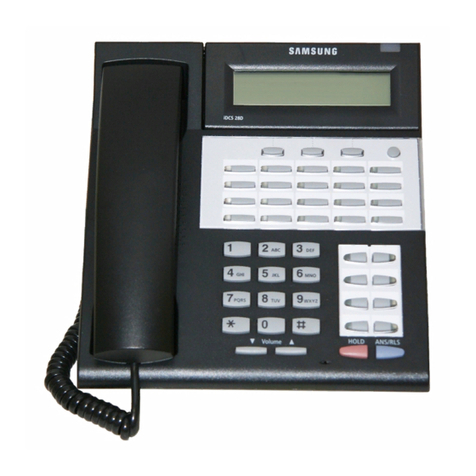
Samsung
Samsung iDCS 100 Installation section
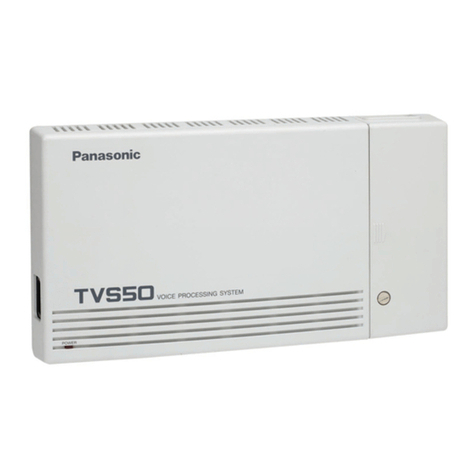
Panasonic
Panasonic KX-TVS50 - 2 Port Voicemail System installation manual
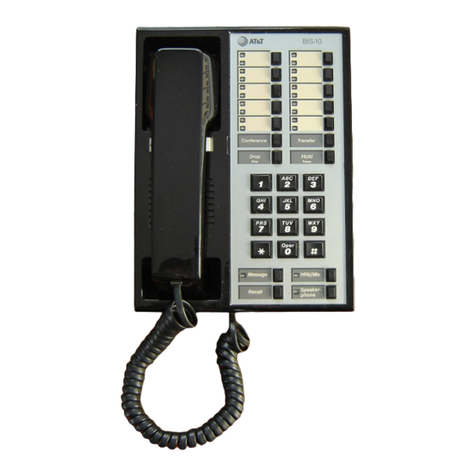
AT&T
AT&T Merlin II Release 3 System manual

Panasonic
Panasonic KX TS208W operating instructions

Panasonic
Panasonic KX-TS2300HGW operating instructions
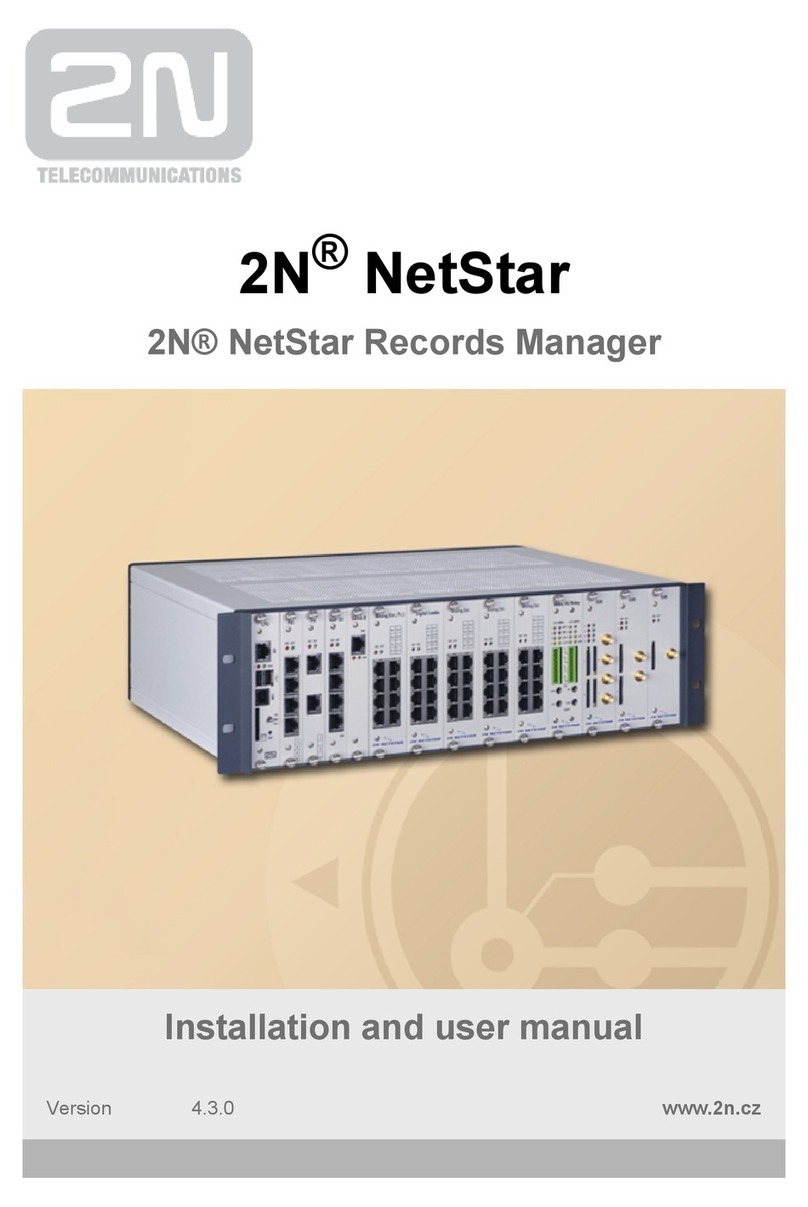
2N
2N Netstar Installation and user manual
